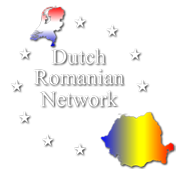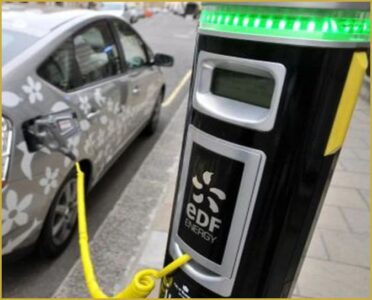Newsletter August 2021

DRN NEWS
DRN and NRCC collaboration project launched
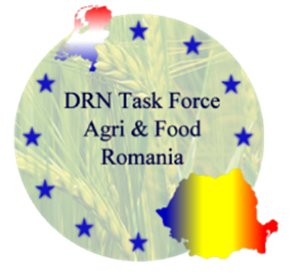
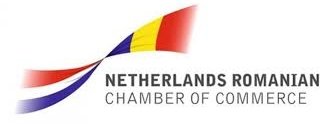
On 3 August, representatives of the Agri@Food Task Forces of the DRN and NRCC met digitally. spoke to the petit committee and thus gave the starting signal to jointly develop activities or opportunities for them to join create that can lead to a win-win situation in both countries. In short, a strategic partnership between NRCC and DRN would be desirable, but also between the two countries, because the Netherlands and Romania are complementary and certainly not competitive.
The DRN side submitted a memorandum “Agricultural cooperation NL-RO: Opportunities to create a win-win situation”. You can consult this by here to click. You will be regularly informed about the progress via this newsletter informed because the present activities are also related to the EU activity of “Farm to Fork” which was also recently initiated by the Romanian Minister of Economic Affairs.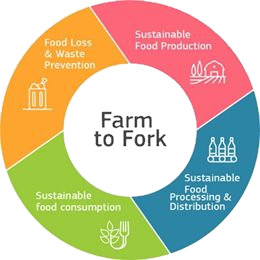
Chairs of both Task Forces are Reinder Schaap (DRN – Former Agricultural Council) and Laurentiu Gioroc (NRCC – FrieslandCampina Romania).
Wetskills-Romania 2021 – September 11 to September 23
 For the fifth time, the Dutch Wetskills Foundation is organizing a Wetskills Challenge in Bucharest.
For the fifth time, the Dutch Wetskills Foundation is organizing a Wetskills Challenge in Bucharest. 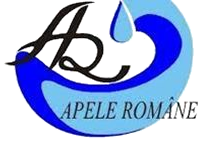
In short, the Wetskills Challenge is aimed at studying the water problem in the broadest sense of the word and coming up with solutions in a relatively short period of time. The water problem can be put forward by any institution, government or company (case owners). Wetskills Foundation invites students (Bachelor (final year), Master and PhD) and Young Professionals from universities and organizations worldwide with a passion for Water-Energy-Food to participate in this Wetskills Challenge. The Wetskills Water Challenge is a two-week event for university students and young water professionals from around the world. The participants work multidisciplinary and intercultural teams to develop turnkey solutions for water challenges of the aforementioned Case Owners. This Wetskills edition in Romania is organized by the University of Agronomic Sciences and Veterinary Medicine, the Politehnica University and the Technical University of Civil Engineering in Bucharest. Other important partners are the Romanian Water Association, Apele Romane and the Dutch Embassy (Violeta Coizianu). For institutions such as Deltares,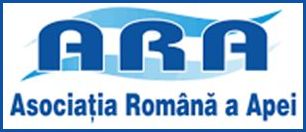 Engineering firms such as Witteveen+Bos
Engineering firms such as Witteveen+Bos and companies such as Nijhuis Industries, and many others that are part of the water sector, it can be very attractive to participate directly (as a case owner) or to get acquainted in another way with the Romanian water sector, which offers many opportunities. There is also a link with the Amsterdam International Water Week( AIWW 2021 which will be organized in Amsterdam from 1-5 November and which has as its central theme ‘Blue-Green deals with Integrated Solutions’
and companies such as Nijhuis Industries, and many others that are part of the water sector, it can be very attractive to participate directly (as a case owner) or to get acquainted in another way with the Romanian water sector, which offers many opportunities. There is also a link with the Amsterdam International Water Week( AIWW 2021 which will be organized in Amsterdam from 1-5 November and which has as its central theme ‘Blue-Green deals with Integrated Solutions’
For further information: https://wetskills.com/event/wetskills-romania-2021/ Contact person is Johan Oost( ( johan.oost@wetskills.com, Mob.+31 (0)6-2678 5402)
Romania has major problems with water as a resource
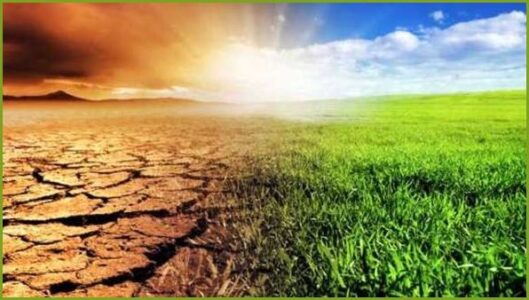 The Romanian Minister of Agriculture Adrian Oros draws the government’s attention to the fact that the Dobruja region (Black Sea region) has been suffering from a serious water shortage for many years and the Dolj district (south of Craiova) is experiencing an ever-expanding desertification. It is obvious to blame it on global warming, but that is incorrect. That’s a factor that needs to be added. The chaos that arose after 1989 was the cause, especially in Dolj, when the excellent irrigation works (near the Danube) were dismantled by people with less good intentions.
The Romanian Minister of Agriculture Adrian Oros draws the government’s attention to the fact that the Dobruja region (Black Sea region) has been suffering from a serious water shortage for many years and the Dolj district (south of Craiova) is experiencing an ever-expanding desertification. It is obvious to blame it on global warming, but that is incorrect. That’s a factor that needs to be added. The chaos that arose after 1989 was the cause, especially in Dolj, when the excellent irrigation works (near the Danube) were dismantled by people with less good intentions. 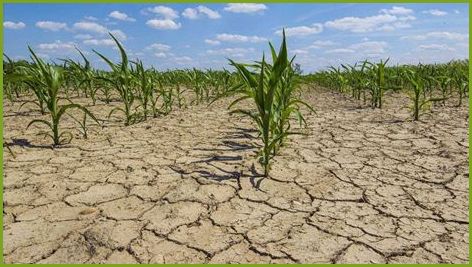
Oros points out that no resources have been made available in the national budget to finance a water management strategy amounting to approximately 4 billion in the context of the National Resilience and Restart Program (PNRR). Oros does not rule out the possibility of public-private partnerships. This offers attractive opportunities for both banks and companies. The need is high because it has a direct negative impact on the food supply.
Agricultural sector
Frankort & Koning Beheer Venlo BV takes over the company TP Haluco Holdings BV.
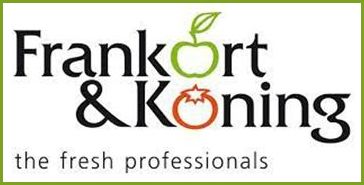 As both companies are active in Romania, the Romanian Competition Council has approved the transaction by which Frankort & Koning Beheer Venlo BV intends to acquire TP Haluco Holdings BV and does not create significant barriers to effective competition in the local market.
As both companies are active in Romania, the Romanian Competition Council has approved the transaction by which Frankort & Koning Beheer Venlo BV intends to acquire TP Haluco Holdings BV and does not create significant barriers to effective competition in the local market.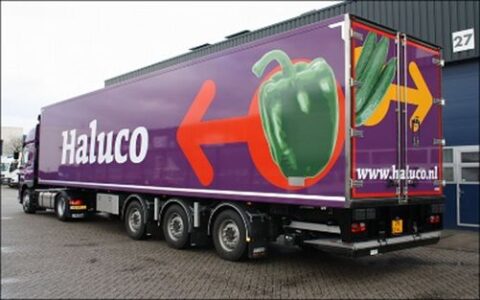
In Romania Frankort & Koning Beheer Venlo BV is active on the wholesale market of fresh fruit and vegetables.
TP Haluco Holdings BV, the Netherlands, owns Haluco BV and Nedalpac BV, companies active in the marketing and distribution of fruit and vegetables. In Romania, Haluco BV is active on the wholesale market of fresh fruit and vegetables.
Romanian Farmers Club: Romania has an exceptional harvest score
The Romanian Farmers Club announces that Geoglam (cropmonitor.org) released a report on crops worldwide on July 28, 2021. Geoglam is an organism that generates crop predictions via a planetary satellite system. On the expanded map of the earth, Romania is the only country with a full crop classification at the Exceptional level (all crops across Romania have received this classification).

“We can assume that this is a reference moment for Romania, which does not happen twice in our time. The harvest classification “Exceptional” brings the world to the attention of the potential of agriculture in our country. At the same time, it is a good opportunity to raise awareness and recognition of the role and contribution of farmers in ensuring food security.This evaluation demonstrates the results that farmers can achieve by applying high technology provided by agribusiness companies, in favorable climatic conditions, results that can be enhanced by creating optimal working conditions for farmers,” said Cezar Gheorghe, an analyst at the Romanian Farmers’ Club for the grain trade.
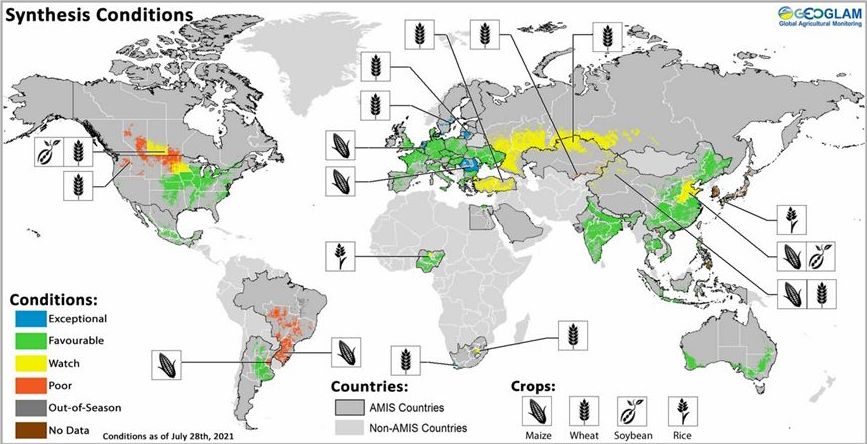
“Irrigation is the essential factor for Romania to reach its potential in agriculture. Only integrated water management will ensure that the resource is used for agriculture and environmental protection. Multi-annual planning is needed to ensure irrigation (national system and local projects) and drainage , based on the integrated water strategy. In 2020, the Romanian government has allocated compensations from the national budget amounting to 850 million lei. Irrigation eliminates the risk of crop loss due to drought and compensation payments. Romania is the country with the most spectacular increase in agricultural production and yield in the European Union over the past 10 years. We need policies and programs that support the increase in profitability and performance in Romanian agriculture,” said Florian Ciolacu,
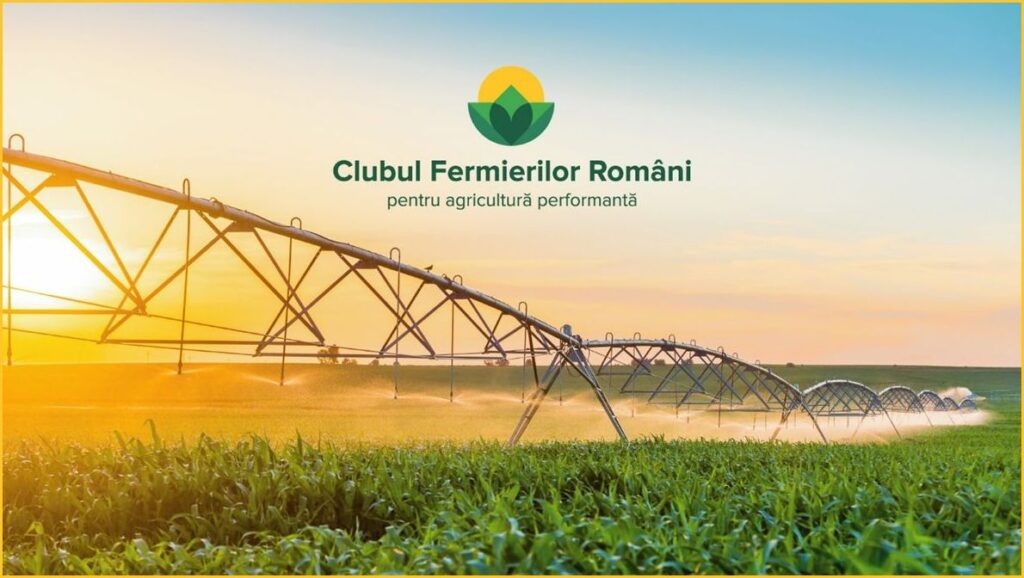
The Romanian Farmers Club has launched a proposal to develop a national strategy for integrated water and soil management for agriculture, which will provide the framework for a multi-year public investment program to modernize the national irrigation system and support the program for local irrigation projects. The first meeting of the working group took place on July 16 in Timişoara, with the participation of the leadership of the Ministry of Agriculture and Rural Development, the Timiș County Council, the USAMVB in Timișoara and farmers in the region.
About the Romanian Farmers Club
The Romanian Farmers Club for Performance Agriculture is a non-profit and non-governmental association of Romanian farmers. The members of the association are high-performing farmers who have business models based on innovation, technology and good practices in agriculture, in order to increase competitiveness and added value in this area.
 The main aim of the Romanian Farmers Club is to ensure that its members are actively involved in the process of consultation and elaboration of European and national agricultural regulations, in order to improve the performance of Romanian farmers.
The main aim of the Romanian Farmers Club is to ensure that its members are actively involved in the process of consultation and elaboration of European and national agricultural regulations, in order to improve the performance of Romanian farmers.
The activity of the association is organized around projects, based on the needs of farmers, approved by the Board of Directors and implemented by the executive unit of the Club. The projects focus on legislation, taxation, technology and human resources and aim to find solutions that respond in a real, concrete way to the problems farmers face.
The Romanian Farmers Club launches and implements concrete programs and projects in four strategic directions of action: representation, advice and consultancy, training and leadership, information and communication. The approach of this association seems to us as a DRN professional and therefore an excellent discussion partner for the Romanian Ministry of Agriculture! And with that also for the Agri&Food Task Forces of the NRCC and DRN. See also: https://cfro.ro/
European funds of more than €3 billion for agriculture over the next 2 years
The agricultural sector, one of the most financed and financeable sectors of the Romanian economy, will benefit from a total allocation of approximately EUR 20 billion. This amount concerns the period 2021-2027, including the aforementioned transition period of 2021-2023.
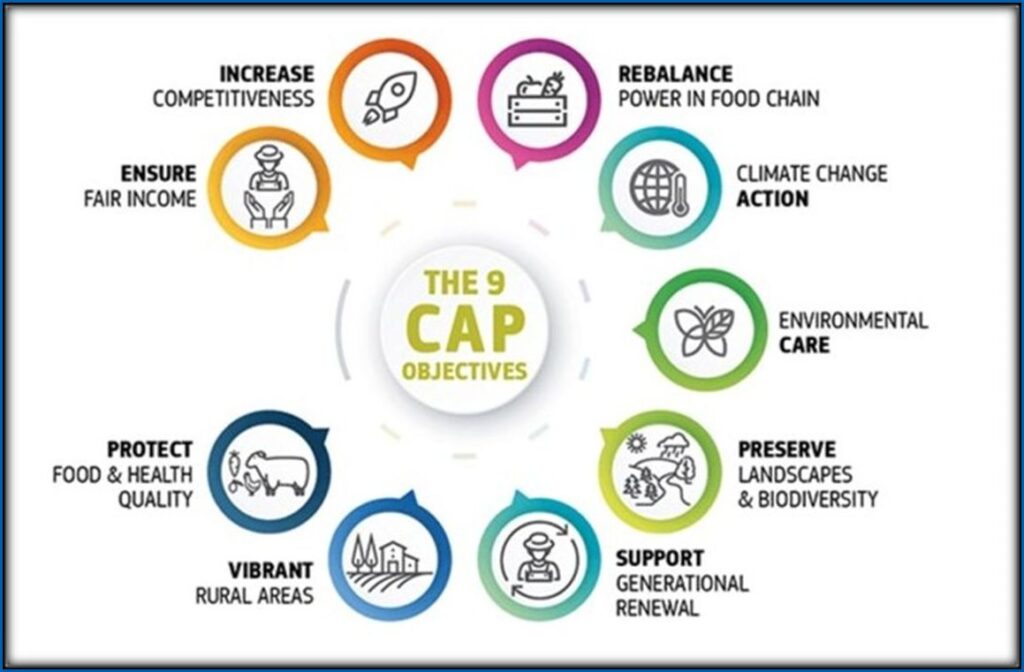
Which projects will receive funding in agriculture in the next two years?
The first application sessions for access to European funds allocated during the transition period were launched in mid-July as follows:
- Sub-measure (SM) 4.1 ‘Investments in agricultural holdings’, with an allocation of EUR 760 million, will provide non-repayable support for the following components:
- Animal husbandry (primary production, packaging and promotion) at national level: 240 million euros ;
- A simple purchase and irrigation equipment on the farm: EUR 125 million ;
- Vegetables (also in protected areas) and potatoes (primary production, packaging and promotion): EUR 100 million ;
- Young farmers (purchase of machines – plants and livestock): 75 million euros;
- Mountain level livestock farming (primary production, packaging and promotion): 60 million euros ;
- Factory (conditioning, farm processing and promotion): 55 million EUR ;
- Zootechnical (conditioning, on-farm processing and promotion): 55 million EUR ;
- Vegetables, potatoes (packaging, processing and promotion): EUR 50 million ;
- Sub-measure (sM) 4.1a ‘Investments in fruit companies’: allocation of EUR 122.7 million ;
- Sub-measure (sM) 4.2 ‘Aid for investment in the processing and marketing of agricultural products’: allocation of 140 million EUR ;
- Sub-measure (SME) 4.2a ‘Supporting investments in the processing and marketing of fruit products’: 10 million euros ;
- Sub-measure (sM) 4.3 ‘Investments for the development, modernization and adaptation of agricultural infrastructure’ – Agricultural Road Component: EUR 100.66 million ;
- Sub-measure (mM) 6.1 ‘Establishment of young farmers’: 100 million euros ;
- Sub-measure (SME) 6.2 ‘Support for setting up non-agricultural activities’: 50 million euros ;
- Sub-measure (SM) 6.3 ‘Support for the development of small farms’: 87 million euros European resources;
- Sub-measure (SME) 6.4 ‘Investments in the establishment and development of non-agricultural activities’: 100 million euros to European funds;
- Sub-measure (SM) 9.1 “Establishment of producer groups in the agricultural sector”: 5 million euros public allocation;
- Sub-measure (SME) M10 agri-environment and climate: EUR 142 million public allocation and EUR 146.76 million European resources;
- Sub-measure (sM) M11 ‘Organic Farming’: EUR 129.63 million in public allocation and EUR 102.65 million to European funds;
- Sub-measure (SM) M13 “Payments for areas with natural or other specific constraints”: EUR 660.12 million public allocation;
- Sub-measure (SM) M14 “Animal Welfare”: 273.6 million euros government allocation;
- Sub-measure (SME) 16.4 ‘Support for horizontal and vertical cooperation between actors in the supply chain’: 40 million euros ;
- Sub-measure (SME) 16.4a ‘Support for horizontal and vertical cooperation between actors in the supply chain’ pomarities: EUR 10 million ;
- Sub-measure (mM) 17.1 ‘Plant and animal insurance’: EUR 31.2 million public allocation; (project ceiling EUR 34.32 million);
- Measure M19.1 ‘Preparatory support for the development of (future) local development strategies’: EUR 5 million ;
- Measure M19.2 ‘Support for the implementation of actions under the local development strategy’: EUR 100 million public allocation;
- Measure M19.4 ‘Supporting LAG’s operating and animation costs’: EUR 23 million ;
(The allocations can also change depending on the identified amounts up to the opening date of the session)
The effect that the producers felt after the introduction of the labels “increased in Romania”: Zero
More than five years ago, meat producers had high expectations of the label showing the origin of the products they manufacture. However, a recent assessment by the European Commission shows that more than half of the European economic operators consulted did not report any tangible benefits following the obligation to include this labelling. Romania is not on the list of countries where market access has increased slightly.
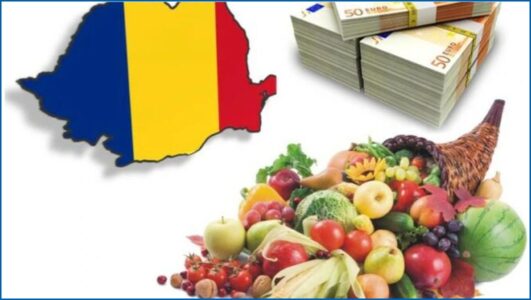 The term “raised in Romania”, which has appeared on labels of pigmeat, sheep, goats and poultry since 2015, following the entry into force of a Commission Regulation on the designation of the country of origin or place of origin for fresh, chilled or frozen meat (Regulation 1337/2013), had no particular impact on domestic producers. Long-awaited by them, in the idea that it will boost consumption, but especially access to large retail chains, the label has not increased the attractiveness of local producers in the markets, according to a European Commission evaluation report to the European Parliament.
The term “raised in Romania”, which has appeared on labels of pigmeat, sheep, goats and poultry since 2015, following the entry into force of a Commission Regulation on the designation of the country of origin or place of origin for fresh, chilled or frozen meat (Regulation 1337/2013), had no particular impact on domestic producers. Long-awaited by them, in the idea that it will boost consumption, but especially access to large retail chains, the label has not increased the attractiveness of local producers in the markets, according to a European Commission evaluation report to the European Parliament.
‘As regards the benefits resulting from the entry into force of the Regulation, more than half of the economic operators consulted did not report specific tangible benefits resulting from the implementation of the Regulation; only in a few Member States (Ireland, Greece, Germany, Denmark) a slight increase in access to the internal market has been reported by some operators in the pig sector, but this has not led to higher producer prices. Operators in other Member States have not reported changes in internal market dynamics. Of the intangible benefits, the increase in transparency and thus consumer confidence has been reported most often,” the report said.
Consumers want local products
In terms of consumer opinion, the survey shows that country of origin is an important consideration when purchasing meat. Most consumers prefer meat of national origin as it is safer or of better quality produced in their own country, and satisfaction with the information on the label is generally high unless swine fever is prevalent.
However, the survey reported a low understanding of the terms “raised in” and “origin”. Most consumers interpret the term “raised in” as the country where the animal has spent its entire life or country of birth. Therefore, some consumers are likely to be (unintentionally) misled by the labeling regarding the growing season. This is mainly due to a lack of clear communication and specific knowledge, rather than the regulation itself.
Protectionism in Germany?
In order to stay closer to home, from the summer of 2022 only the meat of piglets that were born, raised and slaughtered in our eastern neighbors will be given a place on the shelves of the large-scale gritter. From now on, the supermarket will also pay the pig farmers a price that covers the costs. The Cologne supermarket group Rewe, known for the retail brands Rewe and Penny, is a major player in the German market with a market share of 20%.
Pig farmers in Germany are having a hard time and Rewe is responding to this with this measure. Only when the measure is adopted by other supermarkets will there be no more room for Dutch piglets and pork in Germany.
Costs have increased slightly
In the pork and poultry supply chain, labeling costs ranged from negligible values to a maximum of 2%. The reason for this is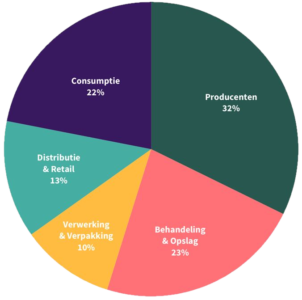 that the costs already incurred for the general traceability rules have absorbed the costs incurred by the implementation of the new rules. These minimal cost increases were not passed on throughout the chain and the investigation revealed no evidence that consumer prices changed as a result of the implementation of the Regulation.
that the costs already incurred for the general traceability rules have absorbed the costs incurred by the implementation of the new rules. These minimal cost increases were not passed on throughout the chain and the investigation revealed no evidence that consumer prices changed as a result of the implementation of the Regulation.
“The regulation is designed to have a minimal impact on the sector, while providing consumers with sufficient information for their purchase decision. There is evidence that these goals have been achieved. Therefore, there is no need to revise the current provisions at this stage. This conclusion is without prejudice to the overall assessment of consumer information referred to in the Farm-to-Consumer strategy, the report concludes.
Corrupt Italian “peasants” scam the Romanian state
The Romanian state has received funds from the EU to promote the cultivation of tomatoes. The European Anti-Fraud Office (OLAF) monitors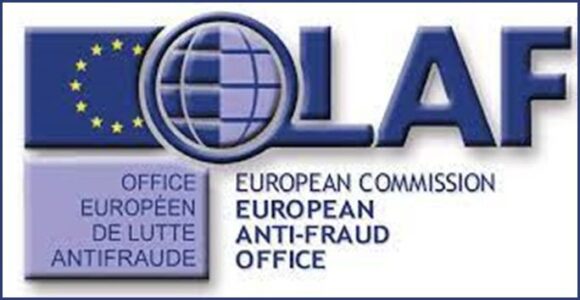 whether the funds are spent in accordance with the terms of the provision . They discovered that five Italian quasi tomato growers located in the Mehedinti district have defrauded the Romanian state for approximately 850,000.
whether the funds are spent in accordance with the terms of the provision . They discovered that five Italian quasi tomato growers located in the Mehedinti district have defrauded the Romanian state for approximately 850,000.
“Not a cent of this money has been spent in Romania. Once the Romanian Agricultural Payments Agency transferred the subsidies to the bank accounts of the five companies, the money was transferred to bank accounts in Italy, where it was quickly withdrawn from ATMs or counters in banks and used to finance other criminal activities,” OLAF said.
Developments in the environment, climate, energy transition and Green Deal
The lobby of the European gas industry has intensified
Romania – the second largest producer in the EU is facing an increase in market financing due to Brussels’ unfriendly policies. There is a political controversy over considering gas as an unsustainable fuel.
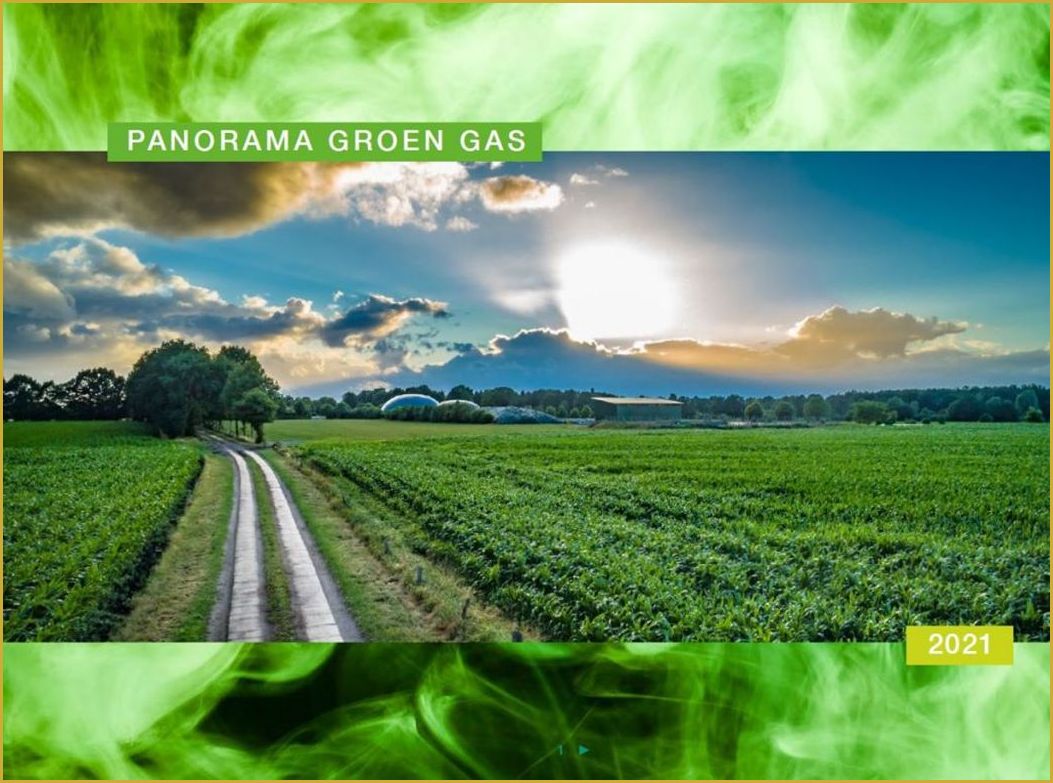
Why it’s important:
Romania reached a position in the top of the main gas producers in the European Union (EU) in 2020 and came second, with a production of 9 billion cubic meters, doubling the percentage share, from 9.1% in 2019 to 16.5% of the total gas volume produced by EU countries last year. The intensification of the industry lobby is taking place in the context of several governments, including Romania, the EU’s second largest gas producer, as well as European companies (OMV Petrom and Romgaz are major gas producers in Europe) are struggling to get gas on the Union’s list of sustainable economic activities. While excluding gas from the list wouldn’t stop gas producers from financing themselves with loans or equity, some companies fear financing will become more expensive. Governments, especially those in Eastern Europe, see gas as a transition fuel from coal to renewables. Despite the recommendation of some EU experts to include gas on the list, but only if it meets strict emissions regulations (which, according to Reuters, no gas plant in Europe currently does), the European Commission has not yet taken a decision.
ING Bank launches first green loan for green car (electric)
The first green loan in ING’s portfolio for private individuals has an interest rate that is almost two percentage points lower than the standard personal loan offer. In addition, it can be granted locally on the basis of a single document: the proforma invoice. To make the transition to a sustainable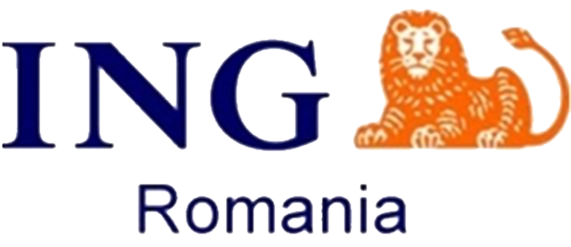 To promote lifestyle among individual customers, ING Bank Romania is launching the first green loan in its portfolio for the retail segment. Derived from the offer of loans for personal needs, it is intended for those who want to buy a full or plug-in hybrid electric car, with an interest rate between 5.49% and 9.99%.
To promote lifestyle among individual customers, ING Bank Romania is launching the first green loan in its portfolio for the retail segment. Derived from the offer of loans for personal needs, it is intended for those who want to buy a full or plug-in hybrid electric car, with an interest rate between 5.49% and 9.99%.
The purchase of more environmentally friendly cars is growing worldwide. In Romania, according to an APIA study, there was a 79.8% increase in sales of “electrified” cars in the first four months of 2021 compared to the same period last year. In addition, the number of plug-in hybrid cars sold increased remarkably, reaching 155.25%.
Sustainability has long ceased to be in the “nicetohave” sphere of corporate strategies. Today it is a necessity. We have big goals worldwide and we all have to contribute, whether we are talking about companies, NGOs, authorities or individuals. In Romania, we hear more and more about sustainable or green loans, most of them aimed at the large corporate segment, where ING is also very active. But the retail sector also needs to keep up and come up with solutions that reward those who want to protect the environment. And this product is a good start for us in this direction, encouraging and facilitating such responsible consumer decisions.” says Roxana Cristea, Lending TribeLead ING Bank Romania .
The first green loan in ING’s portfolio for private individuals has an interest rate that is almost two percentage points lower than the standard offer of a personal loan. In addition, it can be granted locally on the basis of a single document: the proforma invoice. ING Bank does not require payment of an advance for the granting of the loan, nor does it require the taking out of CASCO insurance. In the first phase, it will be available in limited numbers in the ING offer, until the end of the year. The loan can only be applied for in the ING Office network and can then be managed directly from Home’Bank.
Unexpected obstacle in the fight against global warming: people eat too few fries
 The battle to reduce carbon dioxide has revealed a totally unexpected obstacle: the world isn’t consuming enough French fries. That is the conclusion of the Danish group AP Moller Maersk A/S . Maersk is the world’s largest shipping company and says it will use biofuel to power its ships, but there isn’t enough used cooking oil to make the biofuel. “Biofuel is produced from used cooking oil, but the problem is that the world isn’t consuming enough chips. We can’t expand further. If our growth continues, the used cooking oil will run out in a year or two,” said CEO Soren Skou and quoted by Bloomberg. Maersk has a fleet of more than 700 ships, which consume approximately 12 million tons of diesel annually. The equivalent of the total amount of oil produced worldwide in one day.
The battle to reduce carbon dioxide has revealed a totally unexpected obstacle: the world isn’t consuming enough French fries. That is the conclusion of the Danish group AP Moller Maersk A/S . Maersk is the world’s largest shipping company and says it will use biofuel to power its ships, but there isn’t enough used cooking oil to make the biofuel. “Biofuel is produced from used cooking oil, but the problem is that the world isn’t consuming enough chips. We can’t expand further. If our growth continues, the used cooking oil will run out in a year or two,” said CEO Soren Skou and quoted by Bloomberg. Maersk has a fleet of more than 700 ships, which consume approximately 12 million tons of diesel annually. The equivalent of the total amount of oil produced worldwide in one day.
The Danish company promises to reduce CO2 emissions to zero by 2050. On the other hand, used cooking oil is more expensive than new cooking oil, precisely because there is a huge demand for the creation of biofuel. Maersk has taken a first step towards the to reduce CO2 emissions and has ordered its first ship in the world that will not emit carbon dioxide. The vessel should reach the Danish group’s fleet by mid-2023 and will be equipped with mixed technology: it will be able to run on green methanol, but also on low-sulfur diesel.
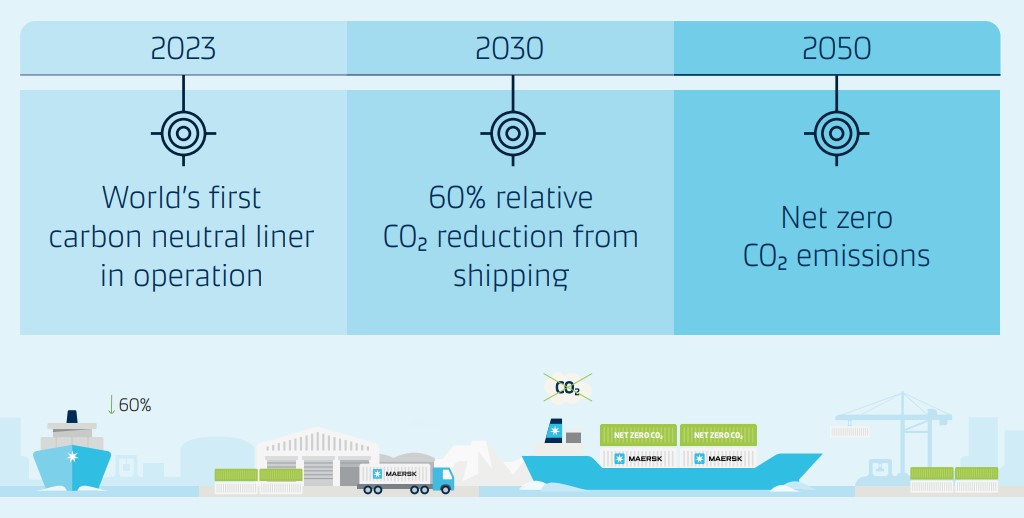
IKEA is guilty of illegal deforestation in Romania
Agent Green, an environmental protection NGO, accuses IKEA of hypocrisy and points out that the company is violating several forestry and environmental protection laws.
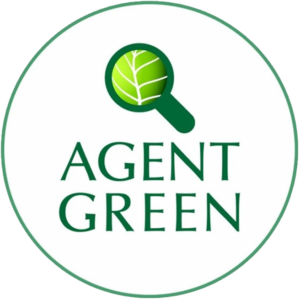 In the past, Ikea has had to close all its furniture factory for using illegally obtained wood from the Romanian forests.
In the past, Ikea has had to close all its furniture factory for using illegally obtained wood from the Romanian forests.
Now Agent Green has published an investigative report on the deliberate degradation of secular forests in Romania owned by IKEA. The report entitled “Hypocrisy. The cynical destruction of secular forests in Romania by IKEA” The report highlights systemic forest management issues related to several forests in Romania owned by the Swedish company.
Over the past two years, Agent Green agents have documented several violations of forest and environmental laws. They say these violations are negatively impacting local habitats and that some of these IKEA-owned forest areas have been registered as protected areas because of their importance to wildlife conservation.
“In previous studies, we have shown how wood harvested from virgin forests of the Romanian state in the Ţarcu Mountains reaches IKEA furniture around the world after being cut down by a local company, in the Kronospan factory in Sebeș. transformed into planks and assembled into furniture in the Ecolor factory by factory from Cluj. Now we show that IKEA no longer cares even in its own forests. It’s equally hypocritical, the discrepancy between promises and reality is downright cynical, and the company’s business is opaque,” said Gabriel Păun, Agent Green’s president.
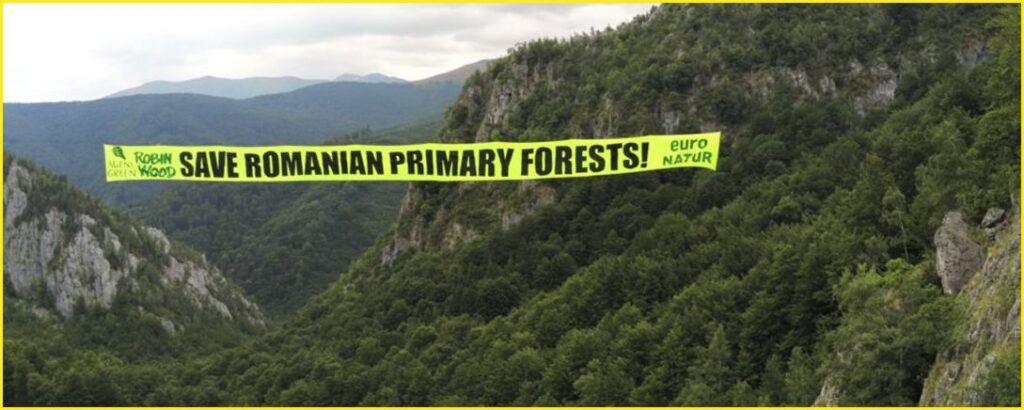
The recently published report was also presented to the Austrian press in Vienna, where IKEA opened a new store at Westbahnhof, an inauguration where 2,000 buyers were expected.
Agent Green, Extinction Rebellion and Lieferkettengesetz are protesting on this occasion, informing the public about IKEA’s lack of transparency and destructive policies. The protesters display several banners, including a huge one that reads “IKEA, STOP TRASHING ROMANIAN OLD-GROWTH FORESTS / IKEA, STOP THE MASSACRE IN THE SECULAR FORESTS OF ROMANIA”.
“The grotesque way IKEA pretends to be sustainable with its new store in Vienna is the perfect example of how multinationals try to cover up their crimes in the production chain by washing away its image. The illegal wood source has been repeatedly documented, with clear examples from Siberia, Ukraine and Romania. The time for companies’ own labels is approaching sundown. There is a need for a new law that reveals the origin of all materials and that would hold corporate leaders and the board of directors legally liable for marketing products that have abused nature and workers. In short, if this law were already in force, the head of IKEA in Austria would have to pay billions and go to jail for selling illegal wooden furniture in Romania. In the coming years we will focus on making it legal,” said Veronica Bohrn Mena, spokeswoman for Lieferkettengesetz, Austria.
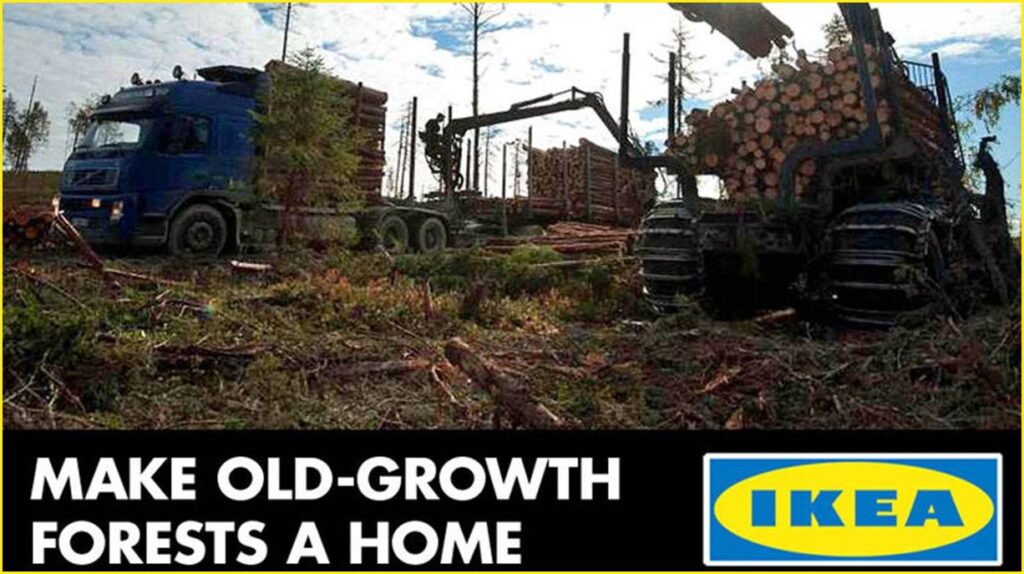
Based on the evidence gathered, Agent Green can conclude that IKEA engages in forestry practices that place minimal demands on the company’s employees and subcontractors who operate on the company’s land, thereby damaging the environment, communities and protected natural areas. Some of these destruction acts are committed in or near EU-designated Natura 2000 sites that must be protected under EU directives. This is also the case for the forest of Valea Neagră, which was cleared in the immediate vicinity of the village of Târâtu, the province of Vrancea and the Natura 2000 protected area, an area where landslides cause great damage and IKEA operations are at risk. community connected to the rest completely from the world. a way.
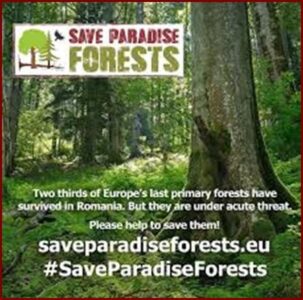 More worryingly, IKEA is currently not taking into account the EU’s forestry and biodiversity strategies for 2030. The strategy calls for strict protection of all remaining primary and secular forests. IKEA, on the other hand, seems to be actively pursuing the exploitation of secular forests on its land before implementing strict protections by law.
More worryingly, IKEA is currently not taking into account the EU’s forestry and biodiversity strategies for 2030. The strategy calls for strict protection of all remaining primary and secular forests. IKEA, on the other hand, seems to be actively pursuing the exploitation of secular forests on its land before implementing strict protections by law.
Agent Green analyzed IKEA’s forest management for the Penteleu Natura 2000 site. The scheme considers it a priority to clear most forest plots with trees with an average age between 120 and 180 years, which need to be exploited “urgently” as a result of a so-called “regeneration emergency”, which is in fact a policy exploitation of secular forests.
Practically speaking, in the midst of a climate crisis, IKEA is prioritizing secular forests, i.e. the forests that can best withstand the challenges of the weather, the forests rich in biodiversity, which produce the most oxygen, water and soil. protect and store most of the carbon,” Păun added.
This policy of urgent exploitation of these forests seems to be based only on the assumption that some trees begin to lose their commercial value after 120 years, but in the case of certain tree species this is the age at which forests begin to accumulate the greatest value in terms of of biodiversity, in particular in terms of animal species that depend on secular forests, such as birds, mammals and insects. 
Other similar forest management also appears to target secular forests within IKEA’s entire forest portfolio, including those in Natura 2000 protected areas.
Agent Green calls on IKEA to urgently change its forestry strategy and strictly protect secular forests. The Romanian authorities and the company’s shareholders must take immediate measures to prevent further irreversible damage to certain areas mentioned in this report.
IKEA owns approximately 50,000 hectares of forest in Romania, making it the largest private forest owner
Top 10 European countries where you can find the cheapest fuel at the pump.
Romania has the second lowest price for petrol and diesel with all taxes in the European Union, after Bulgaria, even though fuel prices have risen recently, according to the latest data from the Oil Bulletin, a European Commission publication.
Instead, duty-free fuel prices are quite high in Romania, although there are several refineries here.
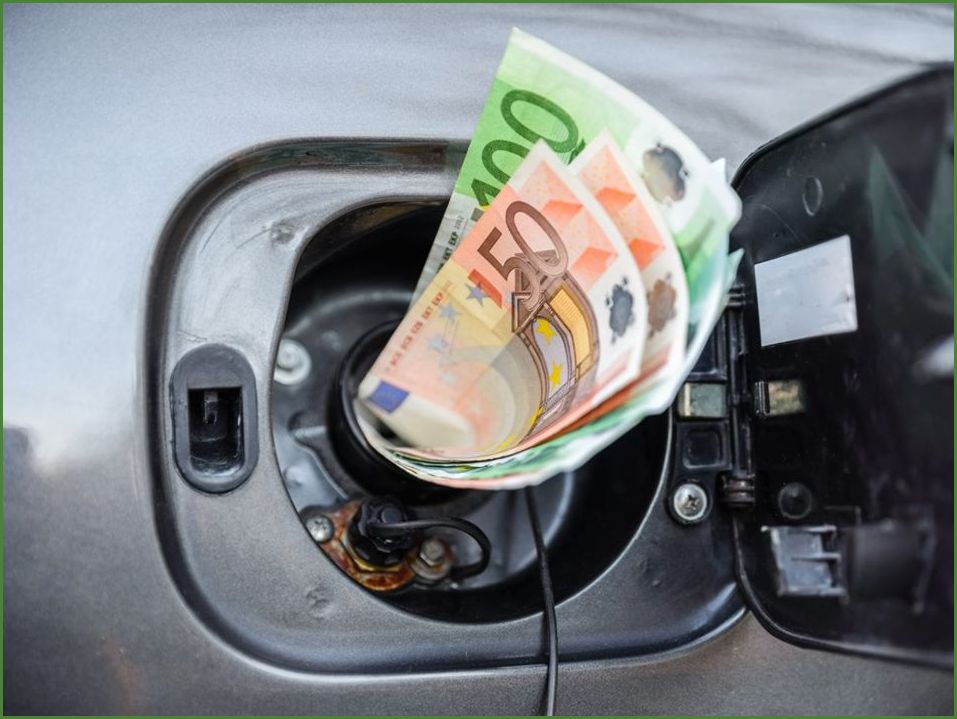
Top 10 European countries where you can find the cheapest pump fuels:
1 Bulgaria
In Bulgaria, the price with all taxes for a liter of petrol is 1.09 euros and 1.07 euros for a liter of diesel. These are the lowest fuel prices in Europe. The tax-free price is 0.55 euros for a liter of petrol and 0.56 euros for a liter of diesel.
2 Romania
Romania has low fuel prices at gas stations compared to other European countries. It is in 2nd place, after Bulgaria. The price with all taxes for a liter of petrol is 1.19 euros and 1.17 euros for a liter of diesel. The tax-free price is 0.63 euros for a liter of petrol and 0.64 euros for a liter of diesel.
3 Hungary
Hungary ranks 3rd in Europe in terms of gas station prices. The price with all taxes for a liter of petrol is 1.24 euros and 1.22 euros for a liter of diesel. The tax-free price is 0.63 euros for a liter of petrol and 0.65 euros for a liter of diesel.
4 Poland
The price with all taxes for a liter of petrol in Poland is 1,248 euros and 1,18 euros for a liter of diesel. The tax-free price is 0.648 euros for a liter of petrol and 0.64 euros for a liter of diesel.
5 Slovenia
The price with all taxes for a liter of petrol in Slovenia is 1.26 euros and 1.30 euros for a liter of diesel. The tax-free price is 0.59 euros for a liter of petrol and 0.60 euros for a liter of diesel.
6 Lithuania
The price with all taxes for a liter of petrol in Lithuania is 1.29 euros and 1.17 euros for a liter of diesel. The tax-free price is 0.604 euros for a liter of petrol and 0.602 euros for a liter of diesel.
7 Cyprus
The price with all taxes for a liter of petrol in Cyprus is 1.30 euros and 1,309 euros for a liter of diesel. The tax-free price is 0.65 euros for a liter of petrol and 0.68 euros for a liter of diesel.
8 Czech Republic
The price with all taxes for a liter of petrol in the Czech Republic is 1.31 euros and 1.23 euros for a liter of diesel. The tax-free price is 0.58 euros for a liter of petrol and 0.63 euros for a liter of diesel.
9 Austria
The price with all taxes for a liter of petrol in Austria is 1.31 euros and 1.24 euros for a liter of diesel. The tax-free price is 0.60 euros for a liter of petrol and 0.63 euros for a liter of diesel.
10 Luxembourg
The price with all taxes for a liter of petrol in Luxembourg is 1.32 euros and 1.20 euros for a liter of diesel. The tax-free price is 0.61 euros for a liter of petrol and 0.62 euros for a liter of diesel.
Top 10 European countries with the most expensive fuel at the pump
The highest fuel prices in Europe are in countries such as the Netherlands, Finland and Denmark.
1 Netherlands
In the Netherlands, the price with all taxes for a liter of petrol is 1.82 euros and 1.46 euros for a liter of diesel. These are the highest fuel prices in Europe. The tax-free price is 0.69 euros for a liter of petrol and 0.677 euros for a liter of diesel.
2 Finland
Finland has high fuel prices at gas stations compared to other European countries. It is in 2nd place, after the Netherlands. The price with all taxes for a liter of petrol is 1.69 euros and 1.51 euros for a liter of diesel. The tax-free price is 0.64 euros for a liter of petrol and 0.70 euros for a liter of diesel.
3 Denmark
Denmark ranks 3rd in Europe in terms of gas station prices. The price with all taxes for a liter of petrol is 1.68 euros and 1.41 euros for a liter of diesel. The tax-free price is 0.72 euros for a liter of petrol and 0.69 euros for a liter of diesel.
4 Greece
The price with all taxes for a liter of petrol in Greece is 1.68 euros and 1.39 euros for a liter of diesel. The tax-free price is 0.64 euros for a liter of petrol and 0.70 euros for a liter of diesel.
5 Portugal
The price with all taxes for a liter of petrol in Portugal is 1.66 euros and 1.45 euros for a liter of diesel.
6 Italy
The price with all taxes for a liter of petrol in Italy is 1.65 euros and 1.51 euros for a liter of diesel. The tax-free price is 0.627 euros for a liter of petrol and 0.62 euros for a liter of diesel.
7 Sweden
The price with all taxes for a liter of petrol in Sweden is 1.62 euros and 1.64 euros for a liter of diesel. The tax-free price is 0.66 euros for a liter of petrol and 0.85 euros for a liter of diesel.
8 Germany
The price with all taxes for a liter of petrol in Germany is 1.61 euros and 1.39 euros for a liter of diesel. The tax-free price is 0.70 euros for a liter of petrol and 0.701 euros for a liter of diesel.
9 France
The price with all taxes for a liter of petrol in France is 1.58 euros and 1.44 euros for a liter of diesel. The tax-free price is 0.62 euros for a liter of petrol and 0.59 euros for a liter of diesel.
10 Ireland
The price with all taxes for a liter of petrol in Ireland is 1.53 euros and 1.42 euros for a liter of diesel. The tax-free price is 0.61 euros for a liter of petrol and 0.62 euros for a liter of diesel.
Mazars publishes its latest Central and Eastern European Tax Guide

- Wage levels and labor costs vary significantly in the countries of the region
- Over the past year, the minimum gross monthly wage in Romania has increased by 3.14%
- Average private sector wages have risen in some countries, while they have remained flat in others
Mazars, the international audit, tax and consultancy firm, has published the 9th edition of the regional survey on Central and Eastern European (CEE) tax regimes. The Mazars CEE Tax Guide analyzes and summarizes the tax changes in 21 countries and focuses on labor costs, indirect taxes, as well as the different aspects of corporate tax and transfer pricing. The global pandemic has led to several changes in the tax systems in the region, but the study focuses on long-term trends, as investment decisions are best supported by the analysis of trends and changes in regional tax systems, both in historical and geographic comparison.
The list of countries in Mazars’ tax brochure has steadily expanded over the past few years, with the 2021 edition featuring data from 21 countries : Besides the Visegrad group countries, the states of Southeastern Europe, Germany, Austria, Russia, Ukraine, and the Baltic states are also covered. The annual survey aims to provide a full understanding of the tax regimes and policies of the said countries, so the interim tax cuts introduced in the context of the coronavirus pandemic were not the subject of the survey this year.
The Romanian tax landscape in FY 2021 will be characterized by measures to ease the low COVID-19 economy as a means of ensuring a solid route to economic recovery. Fiscal incentives, such as tax amnesty, aim to consolidate fiscal revenue collection and increase taxpayer compliance. Romanian tax authorities are accelerating steps to roll out digitization projects that facilitate contacts and communication with taxpayers to facilitate compliance as well. Going forward, economic recovery could translate into an increasing number of tax audits,” said Edwin Warmerdam, Partner, Head of Tax, Mazars Romania.
In 2021, taxes and contributions on labor and wages continued to fall, but actual rates vary across the region. While Romania, Bulgaria, Ukraine and Hungary still apply flat-rate income tax, other countries, such as the Czech Republic, Austria, Germany, Slovenia, Croatia and Slovakia, have progressive income tax rates.
The regional average of employers’ total wage costs remains unchanged at 160% of net wages , but this value varies considerably from country to country. With regard to taxes and contributions, the ratio between employer contributions and gross wages is on average 15%, but there is a difference of more than 30 percentage points between the lowest and highest employer contributions. The two extremes (the contribution burden is less than 5% in Romania and more than 30% in Slovakia) also emphasize the limitations of the comparability of the respective tax systems.
The countries of the region show the greatest variation in their wage levels. The minimum wage in the V4 countries ranges between €400-630, it is significantly lower in the Balkans and Ukraine, and no competition to about €1,700-1,900 in Germany and Austria. In 2021, however, the minimum wage in euros in several countries (Bosnia, Serbia and Latvia) has risen sharply.
In Romania, from January 1, 2021, the guaranteed minimum gross monthly wage, excluding bonuses or other allowances, will be increased to RON 2,300. The minimum gross monthly wage for the period January 1, 2020 – December 31, 2028 in the construction sector is RON 3,000 per month.
The average wage level in euros rose most in the private sector, by 14% in Germany, but also by 5-10% in Slovakia, Croatia, Latvia and North Macedonia. At present, the value of the average salary in Romania is around RON 5,429.
VAT and new rules for e-commerce
There were no changes in VAT rates across the region over the past year, with standard VAT rates averaging 21%, but with large differences between the countries surveyed. The standard VAT rates of 27% and 25% in Hungary and Croatia remain particularly high. In comparison, in Germany, where the average wage is already close to €4,000, the standard VAT rate is 19%.
 From July 1, 2021, the rules for international e-commerce have also been transformed. At EU level, a major change in VAT taxation is the extension of the OSS (Single Window System, formerly MOSS system, which only applied to telecommunications, radio and television broadcasting and electronic services) to include distance selling to private individuals in in general, and to all services supplied to non-taxable entities, provided that the place of supply of the service coincides with the Member State of actual use.
From July 1, 2021, the rules for international e-commerce have also been transformed. At EU level, a major change in VAT taxation is the extension of the OSS (Single Window System, formerly MOSS system, which only applied to telecommunications, radio and television broadcasting and electronic services) to include distance selling to private individuals in in general, and to all services supplied to non-taxable entities, provided that the place of supply of the service coincides with the Member State of actual use.
In 2021, the tax trends observed before the debut of the COVID-19 pandemic have only accelerated. In most CEE countries, the year started with increased disclosure of information by taxpayers to their national tax authorities with the launch of the DAC6 mandatory reporting of qualifying cross-border arrangements. This could lead to a stronger focus on international tax planning, which was only delayed last year by the exceptional circumstances caused by the global health crisis.
Romania, in particular, has seen a significant increase in the number of tax audits and the aggressiveness of the tax authorities in their assessments at the beginning of 2021, albeit in some cases that the process was reduced by the introduction of electronic means of communication,” said Lucian Dumitru, Fiscal Director, Mazars Romania.
Corporation tax
It remains clear that countries in the region place a very different emphasis on taxing corporate income: there is a difference of 22 percentage points between the lowest and the highest corporate tax rate. Germany has the highest corporate tax rate (31%), the lowest is Hungary and Montenegro (9%), while the regular corporate tax rate in the countries of the region is typically between 15-20%. In Romania, the general corporate tax rate is 16%.
However, the limits of tax competition are becoming increasingly visible. On the one hand, there is no country where the corporate tax rate has been reduced,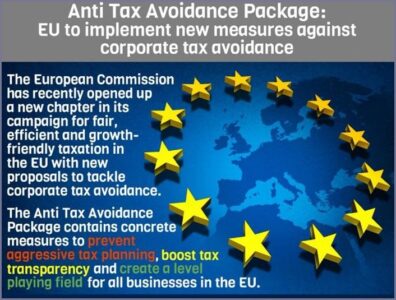 while the European Union is also actively trying to restrict tax competition. The EU’s aim is to establish a common corporate tax framework, or at least prevent the application of the most harmful tax avoidance techniques in Member States. An important instrument in this regard is the Anti-Tax Avoidance Directive (ATAD, Directive 2016/1164 EC), which is mandatory for the member states from 1 January 2019. The adoption of this set of EU rules, including those on interest deduction limits, has been the biggest challenge in recent years. The standardization of offshore (controlled foreign company, CFC) is also rooted in ATAD.
while the European Union is also actively trying to restrict tax competition. The EU’s aim is to establish a common corporate tax framework, or at least prevent the application of the most harmful tax avoidance techniques in Member States. An important instrument in this regard is the Anti-Tax Avoidance Directive (ATAD, Directive 2016/1164 EC), which is mandatory for the member states from 1 January 2019. The adoption of this set of EU rules, including those on interest deduction limits, has been the biggest challenge in recent years. The standardization of offshore (controlled foreign company, CFC) is also rooted in ATAD.
The planned introduction of a global minimum tax will fundamentally change the future of corporate tax and the stage of tax competition between countries
CEE countries that apply traditional corporate tax without exception allow the carry forward of losses acquired in previous years and the possibility to offset them against the positive tax base of later years. This option can usually only be used for a predetermined period of time, usually for 5 to 7 years, in some places only for 3 to 4 years. Currently, 7 countries allow unlimited loss compensation.
With regard to corporate tax, it is worth noting that Hungary and Lithuania still do not levy withholding tax on capital income. Since 2019, group tax is also available in Hungary, which was previously only available in Austria, Poland and Bosnia and Herzegovina.
Transfer prices
By 2021, transfer pricing rules appeared in the tax regimes of almost all countries except Montenegro. The OECD’s Country-by-Country Reporting (CbCR), aimed at improving transparency, makes the information needed to estimate tax risks available to local tax authorities.
In terms of transfer pricing, perhaps the biggest challenge of the past year has been responding to the effects of the global pandemic. The crisis has changed expected profit levels, multinationals have had to change their pricing structures and the question remains to what extent tax authorities will accept or challenge tax bases that will be significantly lower than in previous years.
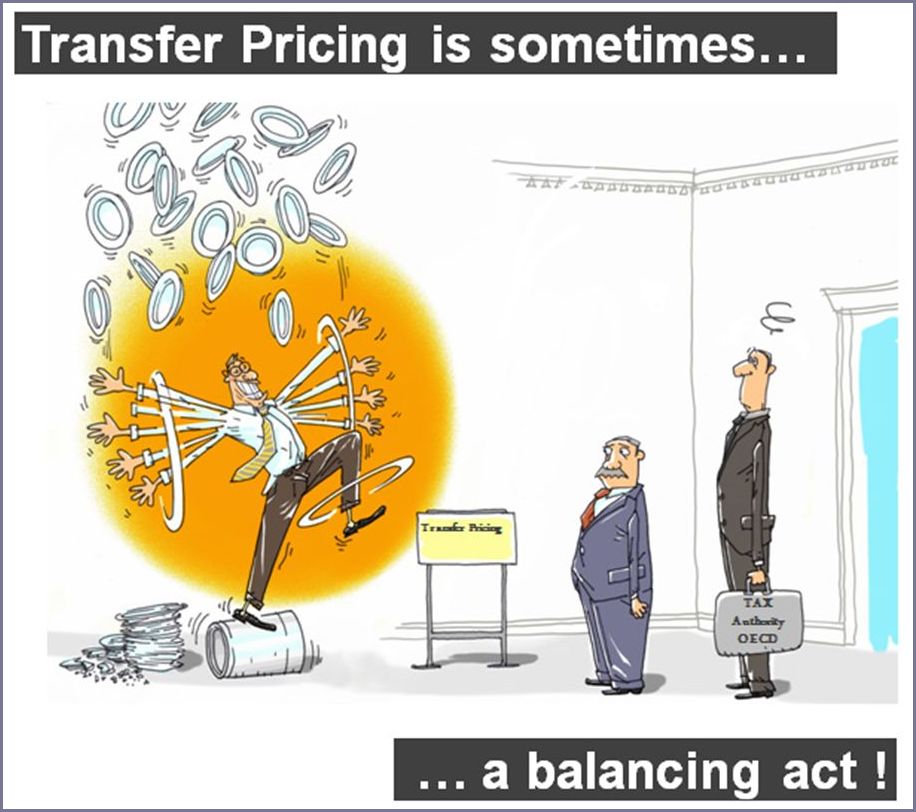
The G7’s decision to introduce a global minimum tax sets a clear path to the next step in corporate taxation. We don’t see the end of the road yet, but it is clear that there will be fewer and fewer opportunities for multinationals to apply profit shifting.
„ Multinational groups with a presence in the region should consider shifting their focus from simply meeting local transfer pricing documentation requirements to entering into Advance Pricing Agreements (APA) with local tax authorities, which enable a transparent approach and provide long-term security with regarding pricing methods . said Liviu Gheorghiu, Transfer Pricing Senior Manager, Mazars Romania.
The Visegrád Group, Visegrád Four, or V4, is a cultural and political alliance of four Central European countries: the Czech Republic, Hungary, Poland and Slovakia.
The Group of Seven is an intergovernmental political forum made up of Canada, France, Germany, Italy, Japan, the United Kingdom and the United States.
Minimum wage
The minimum net wage in Romania of 290 euros, currently the penultimate lowest of the EU countries in the region, is only lower in Bulgaria where it is 258 euros. Of the 21 countries for which data is available – 20 countries in the region plus Germany – Ukraine has the lowest net minimum wage at 139 euros. In Hungary the minimum net wage is 305 euros and in Poland 447 euros. In Russia, the minimum net wage is at the level of 243 euros, according to data from the consultancy Mazars. To facilitate the comparison, the level of the wages in euros has been calculated.
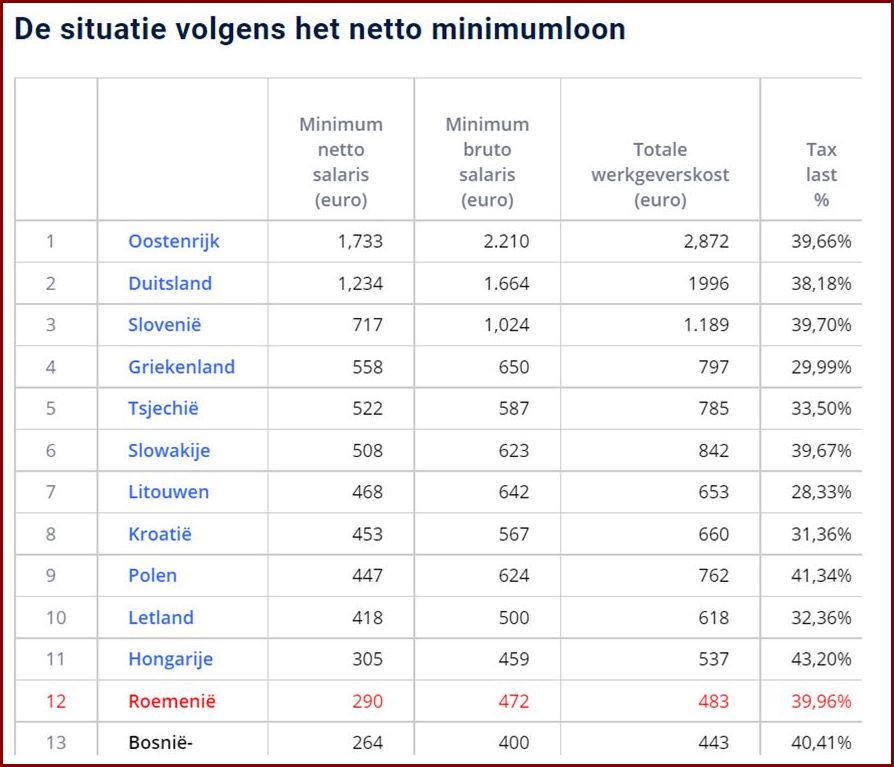
The exchange rate at which the conversion was carried out is the exchange rate chosen by the consultancy, in the case of Romania of 4.87 lei/euro. At the time of writing, 1 euro is quoted by the NBR at approximately 4.92 lei. Problems Salaries in Romania can only be compared with those in other countries at the level of net or total cost to the employer. After the inclusion in the gross salary and employer contributions for the employee, some years ago, the gross salary in Romania became almost equal to the employer’s total costs for the employee, which did not happen in other countries. North Macedonia is in a similar situation.
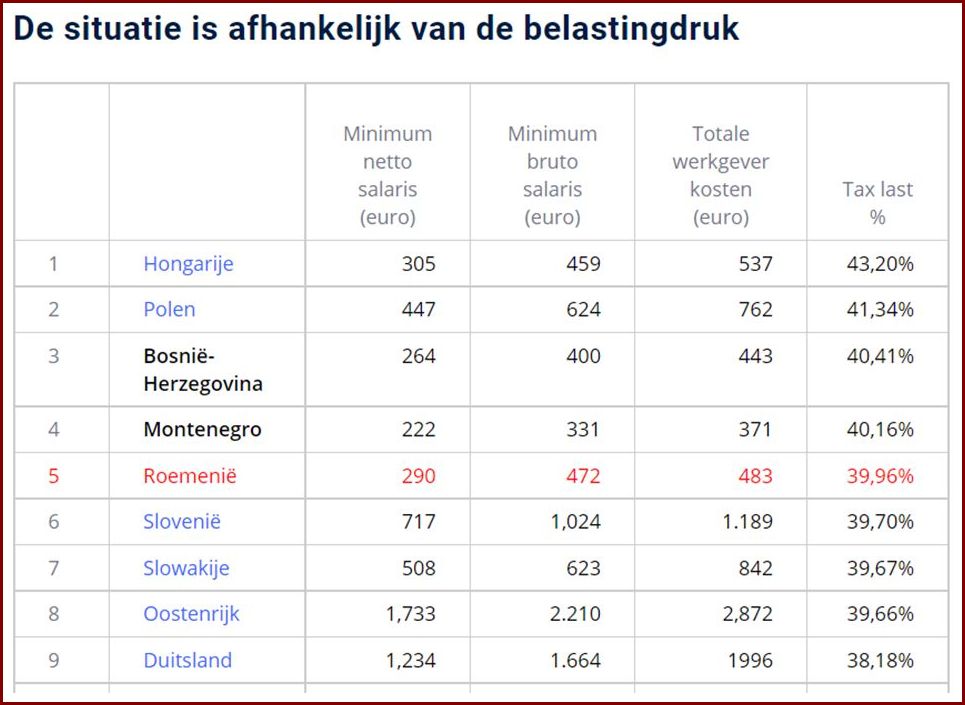
Also relevant, especially in the context of politicians’ discussions about “zero taxes on the minimum wage”, is the tax burden, namely how much goes to the state and how much is left for the employee. For the above reason, the comparison can only be made with the total costs of the employer and the employee and not with the gross salary. The tax burden on the employee’s salary places Romania in 5th place out of 20 states in the region + Germany. The tax burden is higher in Hungary, Poland, Bosnia and Herzegovina and Montenegro, while in Kosovo, Albania, Lithuania and Greece the state receives the least from a minimum wage worker.
For access to the complete tax guide click here
Financial Economic developments
“Creeping” or “running” inflation. How many types of inflation are there and which one is there now in Romania?
Inflation is when the prices of goods and services rise. There are four main types of inflation, classified by the rate at which prices rise. It’s about “creeping” inflation, “running” inflation, galloping inflation, and hyperinflation. In addition to the 4 types, there is also wage inflation, such as wealth inflation. There is also negative inflation (deflation), but that is another story.
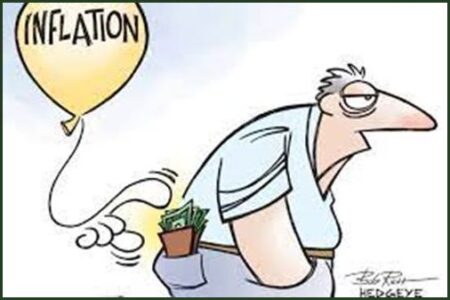 According to the revised inflation forecast published on August 9 by the National Bank of Romania (BNR), consumer prices will rise 9.2% in 2021-2022, 2pp more than previously estimated. The bulk of the revision was made for the first part of the period when annual inflation is expected to reach 5.6% in December, compared to 4.1% according to the previous projection prepared in May. In 2022, annual inflation is expected to decline to 3.4%, a more moderate upward revision of 0.4 percentage points compared to the May 2021 forecast. Inflation already hit 5% in June, BNR Governor Mugur Isarescu hinted (data released this week), blaming energy prices
According to the revised inflation forecast published on August 9 by the National Bank of Romania (BNR), consumer prices will rise 9.2% in 2021-2022, 2pp more than previously estimated. The bulk of the revision was made for the first part of the period when annual inflation is expected to reach 5.6% in December, compared to 4.1% according to the previous projection prepared in May. In 2022, annual inflation is expected to decline to 3.4%, a more moderate upward revision of 0.4 percentage points compared to the May 2021 forecast. Inflation already hit 5% in June, BNR Governor Mugur Isarescu hinted (data released this week), blaming energy prices
Creeping inflation
Creeping inflation or what is considered “mild” is when prices increase by 3% per year or less. According to classical economic theories, inflation of up to 2% benefits economic growth. This kind of “slight” inflation makes consumers expect prices to rise further, and that they have to buy now to avoid buying more expensive in the future. This stimulates demand, which leads to economic expansion. For this reason, the US central banks and the EDF have set an inflation target of 2%.
“Walking” inflation
This inflation has also come to a halt in Romania. It occurs when the price increase is between 3 and 10% per year. It is harmful to the economy because it runs the risk of heating up the economy faster. People are starting to buy more than they need to to avoid higher prices in the future. This leads to faster growth in demand and can lead to situations where suppliers of goods and services cannot keep up. More importantly, wages can’t keep up with this rhythm either.
Galloping inflation
When inflation rises to 10% or more, it threatens to wreak havoc on the economy. Money loses value so quickly that corporate profits and employee salaries can’t keep up with rising costs and prices. This is what happened in Romania in the period 1999-2004, when the annual inflation rate varied between 45.8% and 11.9%. Foreign investors avoid the country and deprive it of the necessary capital. The economy is becoming unstable and credible political leaders are badly affected. Galloping inflation must be avoided at all costs.
Hyperinflation
Hyperinflation is when prices increase by more than 50% per month. It’s very rare, but it happens. In Romania, we had hyperinflation between 1991-1994 and 1997, when prices rose by 256% in one year. Notorious is the case of hyperinflation in Germany in the 1920s, in Zimbabwe in the 2000s or in Venezuela in the 2010s.
Stagflation
Stagflation occurs when economic growth stagnates but prices are still rising. This combination seems contradictory, if not impossible. Why would prices rise if there is not enough demand to stimulate economic growth? It happened in the US in the 1970s, when the United States left the gold standard. When the dollar was no longer pegged to gold, it fell. At the same time, the gold price has risen. Stagflation didn’t end until then – Federal Reserve Chairman Paul Volcker raised the double-digit rate and held it there long enough to dampen expectations for further inflation. The concept of stagflation was first reported in 1965 in the United Kingdom. Possible causes are: energy crises, globalization or the elimination of protectionism.
Negative inflation (deflation)
Deflation is the opposite of inflation. It happens when prices fall. Do you remember the real estate bubble of 2007-2008? Such bubbles can cause deflation. Central banks always allow idling when it comes to deflation because from there it’s just one step into recession. And controlling deflation is much harder than controlling inflation.
Wage inflation
Wage inflation is when workers’ wages rise faster than the cost of living. This type of inflation occurs in three situations. First, if there is a labor shortage. Then it can appear in countries where unions are very strong and negotiate higher and higher wages. Third, wage inflation also occurs when bargaining power rests solely on the employee’s side.
Inflation due to the price of some assets
We wrote before the real estate bubble of 2007-2008. But there are other “balloons” that generate inflation. Take the price of oil, for example. The price of crude oil reached a record high of $145.31 per barrel in July 2008. Traders made goods more expensive, normally including higher shipping costs. The costs of these increases are ultimately borne by the consumer. That’s right, people with lower incomes are most affected by inflation.
Economic analyzes outlook for the next six months
Romania soon became European inflation champion again. Interest rates on loans could rise With an inflation rate of 5% in July, Romania returned, along with Poland, to the number one position in the European Union in terms of rising prices.
Economists now expect central banks in the two countries to raise key interest rates in November. The interest on loans may rise. Inflation has struck across Europe, following the reopening of economies and a return to demand and rising energy prices.
The worst affected are countries outside the euro area. The rise in the price of gas, fuel and electricity has pushed inflation up from 3.9% in June to 5% in July in Romania . We see a similar evolution in Poland, where inflation rose to 5% in July, from 4.4% in the previous month. By contrast, statistics in Hungary reported a fall in inflation to 4.7% in July, from 5.3% in June. In the euro area, Estonia saw the largest year-on-year price increase, at 4.9% in July, compared to 3.7% in June.
The new NBR forecast is 5.6% inflation at the end of the year, compared to 4.1% previously estimated. Poland’s central bank forecasts inflation of 4.2% for its neighboring state by the end of 2021, while Hungary’s sees inflation of 4.1%. The Bank of Hungary has already raised key interest rates twice to keep inflation under control.
Romania suffers from a high (and even growing) current account deficit in the regional context, making it necessary to attract financial investments with higher interest rates than other countries.
“Given the inflation estimate of the NBR (National Bank Romania), we expect the first key rate hike of 25 basis points to take place during the monetary policy meeting on November 9.
An increase in the key rate by the Central Bank of Poland on November 3 should strengthen the decision of the NBR. Depending on the progress of fiscal consolidation and the “fiscal consolidation strategy expected to be developed in the autumn, following the recommendations of the European institutions”, identified in the NBR communiqué as a source of uncertainty, we may be able to add additional increases from 25-50 see basis points of the key rate in 2022 ”, shows the chief economist of BCR(Banca Comercială Română, member of Erste Group Ciprian Dascălu. The main interest rate of the NBR is 1.25%, Hungary came in at 1.2% after recent increases, while Poland is still at 0.1%. – According to the inflation forecast, according to the BCR, the NBR rate would be deep in real-negative territory, second only to Poland. The inflation forecast of the BCR (BCR Bank Group) at the end of the year is 5.3%, revised upwards by 0.1 percentage point, but lower than that of the NBR. Real interest. Source: First Research
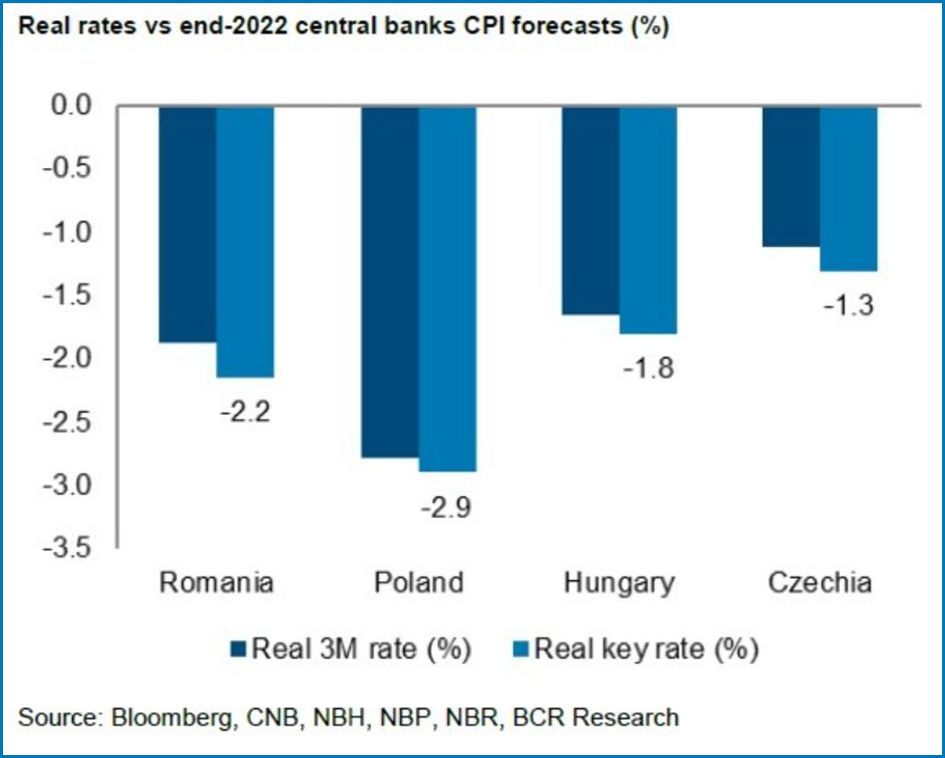
ING also expects the NBR to raise its key rate by 0.25 pp in November and gradually reach 2% by the end of 2022.
The Dutch bank revised inflation to 5.5% at the end of the year, from 4.7%. “Our scenario has long been that we have an initial increase of 50 basis points in early 2022.

Although the rise in inflation is determined by factors beyond the control of the NBR, we believe that the year-end rate of 5.5% or more cannot be minimized by the NBR with the usual rhetoric that it as transient ”, shows ING Romania’s chief economist Valentin Tătaru.
The ING economist also points out that the economy is doing better than expected, so inflationary pressures are expected to come at the end of the year from demand, not just supply, as is often the case now. is, which demands a response. from the bank. central. Dascălu also points out that the transmission of monetary policy in loan interest rates could be done better by raising the interest rate on the deposit facility (now 0.75%), in addition to controlling liquidity, as interest rates on loans to households depending on very short-term investment in the interbank market. The benchmark for loans to the public will fall again in the fall as it is calculated and applied two months late, but the situation may change for borrowers later.
The trade deficit increased by almost two billion euros (23%) in the first six months
The trade deficit (FOB/CIF) has deepened to €10.659 billion in the first six months, which is €1.977 billion (23.19%) higher than between January 1 and June 30, 2020, according to the National Institute of Statistics (INS). published on Monday 9 August. According to the INS (Romanian Bureau of Statistics), FOB exports amounted to EUR 36.168 billion between January 1 and June 30, 2021 and CIF imports were EUR 46.828 billion. Between January 1 and June 30, 2021, exports increased by 26.5% and imports by 25.6%, compared to January – June 2020. In June 2021, FOB exports amounted to €6.242 billion and CIF imports amounted to €8.085 billion, resulting in a deficit of €1.843 billion. Compared to June 2020, exports increased by 28.9% in June 2021 and imports by 31.1%.
In the first six months of this year, important shares in the structure of exports and imports are held by product groups: machinery and transport equipment (47.9% for export and 36.6% for import) and other manufactured products (30.4% for export and 30 % for import).
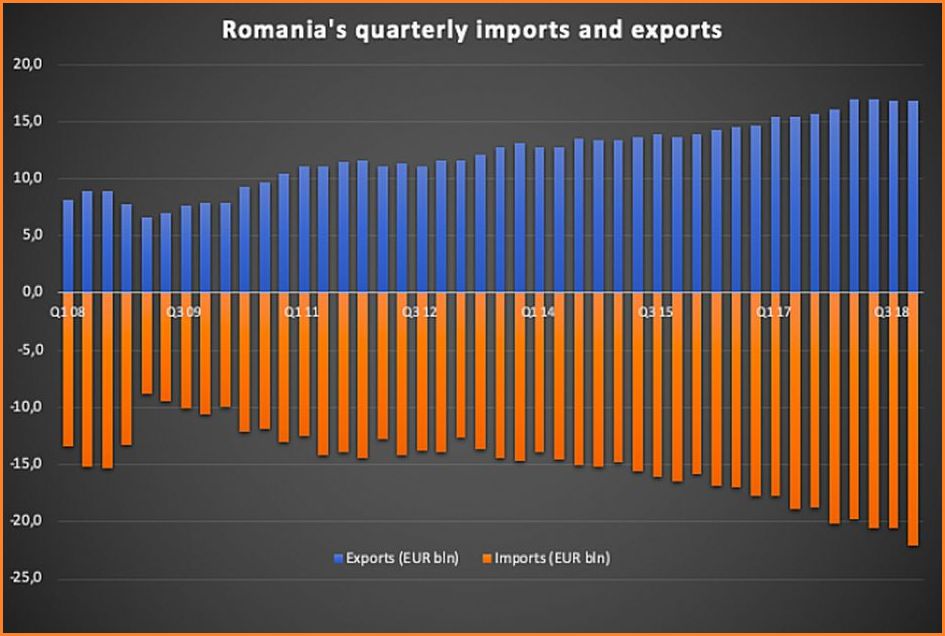
Focus on products with a high added value. Curiously, for a country with such a large agricultural workforce, Romania has a significant shortage of agri-food trade. Many officials and agriculture ministers talked about the issue and plan to change it, but the deficit has continued to grow, reaching more than €1.2 billion in 2019. Romania is one of the largest grain exporters in the EU and also one of the largest sellers of tobacco products. On the other hand, it imports large quantities of meat and products. Officials have repeatedly talked about the need to move from grain exports to the production of higher value-added products. Analysts say, barring some structural changes, Romania will continue to run short in agri-food trade because 50% of its exports are grains, but it imports products with a higher processing rate and, by implication, high added value. The government has also launched several support programs, such as for pork and tomatoes, but this season farmers have been hit hard by drought. And that is another major problem of the Romanian agricultural sector: it is highly weather dependent, so that the shortage can worsen in years of bad weather.
The value of goods exchanges within the EU27 between January 1 and June 30, 2021 was €26.785 billion for shipments and €34.404 billion for introductions, representing 74.1% of total exports and 73.5% of total imports.
The value of trade in goods outside the EU27 between 1 January and 30 June 2021 was 9.383 billion euros in exports and 12.424 billion euros in imports, representing 25.9% of total exports and 26.5% of total imports .
The balance of the FOB / CIF trade balance is calculated based on the value of the FOB export and the CIF import, as the difference between them. The negative balance of the trade balance is called the deficit and the positive one is called the surplus.
The Free on Board (FOB) price represents the price at the border of the exporting country, including the value of the good, all transportation costs up to the point of embarkation, as well as all taxes that the good must bear in order to be loaded on board. .
The CIF (Cost, Insurance, Freight / Cost, Insurance, Shipping) price represents the price at the border of the importing country, which includes the components of the FOB price as well as the cost of insurance and international transportation.
Goldman Sachs buys NN Investment Partners for 1.7 billion euros
 Both present in Romania, Goldman Sachs acquires NN Investment Partners (NNIP), the asset management division of the Dutch insurer NN, for 1.7 billion euros. NNIP is also present in Romania. It is the US investment bank’s largest acquisition since David Solomon took over as CEO in 2018. Satish Bapat, CEO of NNIP, will continue to lead the company following the acquisition by Goldman Sachs. Goldman Sachs Asset Management manages $2.3 trillion in assets. After the acquisition of NNIP, assets under management in Europe will reach USD 600 billion. NN Group and Goldman Sachs have also entered into a strategic partnership under which the US investment bank will manage assets of approximately $190 billion for the Dutch group.
Both present in Romania, Goldman Sachs acquires NN Investment Partners (NNIP), the asset management division of the Dutch insurer NN, for 1.7 billion euros. NNIP is also present in Romania. It is the US investment bank’s largest acquisition since David Solomon took over as CEO in 2018. Satish Bapat, CEO of NNIP, will continue to lead the company following the acquisition by Goldman Sachs. Goldman Sachs Asset Management manages $2.3 trillion in assets. After the acquisition of NNIP, assets under management in Europe will reach USD 600 billion. NN Group and Goldman Sachs have also entered into a strategic partnership under which the US investment bank will manage assets of approximately $190 billion for the Dutch group.  Closing of the transaction is expected in the first quarter of next year and requires approval from the relevant authorities. NNIP manages $355 billion in assets. The NN Group in Romania includes the activities of NN Asigurări de Viață and NN Pensii, leading companies in the profile markets, and NN Investment Partners, number four in the top local investment fund management companies.
Closing of the transaction is expected in the first quarter of next year and requires approval from the relevant authorities. NNIP manages $355 billion in assets. The NN Group in Romania includes the activities of NN Asigurări de Viață and NN Pensii, leading companies in the profile markets, and NN Investment Partners, number four in the top local investment fund management companies.
In the financial sector is looked at with a certain doubt at this takeover because the investment bank Goldman Sachs is seen as a cowboy among the industry.
Geopolitical developments
New Prime Minister appointed in Republic of Moldova
On August 9, economist Natalia Gavriliță of the Party of Action and Solidarity (PAS) was appointed prime minister, thus a party member of the previously elected president Maia Sandu.
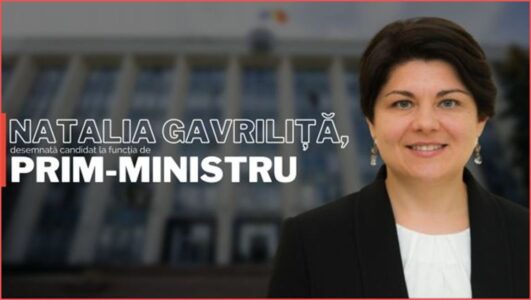 Immediately after her appointment, she had a telephone conversation with Romanian Prime Minister Florin Cîțu, in which she thanked her counterpart for congratulating and supporting the investment in the leadership of the executive. At the same time, Natalia Gavrilița thanked the Romanian government for its support to the Republic of Moldova, including for diesel donations, anti-COVID vaccines, equipment, but above all for supporting the Republic of Moldova’s European course.
Immediately after her appointment, she had a telephone conversation with Romanian Prime Minister Florin Cîțu, in which she thanked her counterpart for congratulating and supporting the investment in the leadership of the executive. At the same time, Natalia Gavrilița thanked the Romanian government for its support to the Republic of Moldova, including for diesel donations, anti-COVID vaccines, equipment, but above all for supporting the Republic of Moldova’s European course.
The two prime ministers agreed to begin preparations for a joint government meeting in Chisinau.
Another area of concern that was raised was the resumption and renewal of the intergovernmental agreement for non-refundable technical assistance. 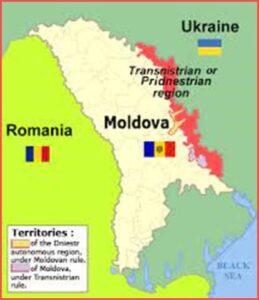 The parties agreed to establish a technical working group to prepare the agreement. Florin Cîțu expressed his full support for the new government in Chisinau by recommending immediate work on the full bilateral cooperation agenda, in the spirit of the Strategic Partnership for European Integration of the Republic of Moldova, The New Government of the Republic of Moldova, led by Natalia Gavriliţă, has gained confidence in the parliament in Chisinau. The government received 61 out of 101 votes from parliamentarians in Chisinau, all from the Action and Solidarity Party (PAS).
The parties agreed to establish a technical working group to prepare the agreement. Florin Cîțu expressed his full support for the new government in Chisinau by recommending immediate work on the full bilateral cooperation agenda, in the spirit of the Strategic Partnership for European Integration of the Republic of Moldova, The New Government of the Republic of Moldova, led by Natalia Gavriliţă, has gained confidence in the parliament in Chisinau. The government received 61 out of 101 votes from parliamentarians in Chisinau, all from the Action and Solidarity Party (PAS).
Cultural sector
Cadenza has given a new impulse to the contemporary classical music experience
The well-known conductor Raymond Janssen has now acquired a prominent place on the Dutch concert calendars with his international orchestras, choirs and world-renowned soloists. . You can call him without exaggeration a centipede among conductors . After all, during this period of (varying) restrictions, he managed to bring together top musicians from different countries, such as the famous soloists Iordache Basalic (baritone) and Valentin Racoveranu (tenor) from Romania and Mariana Bulicanu (soprano) from Moldova in our country. and the International Symphony Orchestra and the International Choir Dumka from Ukraine.
In 2019, the CARMINA BURANA drew full houses and broke all records. A reprise in 2021 was inevitable, so that’s why a grand tour through the Netherlands from 1 to 28 November.

In addition, there are extra concerts in December in the World Forum Theater in The Hague. On December 15 and 16, successively, these are The Star Wars Suite, which is a grand and compelling musical spectacle that drew full houses in the Netherlands in 2018 and 2019. It’s not for nothing that the phenomenal score and soundtracks of Star Wars have been voted ‘best film music of all time’. And from December 17 to 23, the Harry Potter Symphony. Movie themed concerts are immensely popular. However, ‘The Harry Potter Symphony’ – with no fewer than 130 musicians on stage – is unique in this genre.
We refer you to the website for the program and reservation https://cadenza-productions.nl/
Rotterdam Philharmonic Orchestra plays at George Enescu Festival in Bucharest
 In September, the Rotterdam Philharmonic Orchestra will give two concerts at the International George Enescu Festival in Bucharest, conducted by chief conductor Lahav Shani. With the visit to this festival – where it
In September, the Rotterdam Philharmonic Orchestra will give two concerts at the International George Enescu Festival in Bucharest, conducted by chief conductor Lahav Shani. With the visit to this festival – where it Rotterdam Philharmonic was also a guest in 2007 – the orchestra is making its return to the international concert stages. On September 11, the orchestra will play Brahms’ Violin Concerto with Gil Shaham as soloist and Tchaikovsky’s Fifth Symphony. On September 12, Rachmaninov’s Third Piano Concerto with Yefim Bronfman and Musorgsky’s Painting Exhibition is on the program.George Wiegel, general director: “It is a great start to the season for the orchestra to
Rotterdam Philharmonic was also a guest in 2007 – the orchestra is making its return to the international concert stages. On September 11, the orchestra will play Brahms’ Violin Concerto with Gil Shaham as soloist and Tchaikovsky’s Fifth Symphony. On September 12, Rachmaninov’s Third Piano Concerto with Yefim Bronfman and Musorgsky’s Painting Exhibition is on the program.George Wiegel, general director: “It is a great start to the season for the orchestra to  with our chief conductor Lahav Shani to give two concerts at this beautiful international festival where the world top of the music world is a guest. We are buzzing with energy and ambition to make our music sound again within and beyond the national borders.”
with our chief conductor Lahav Shani to give two concerts at this beautiful international festival where the world top of the music world is a guest. We are buzzing with energy and ambition to make our music sound again within and beyond the national borders.”
The Carmen Sylva Foundation the stage for Romanian Art, Culture and Science in the Netherlands provides two free tickets for the “eraly birds” for the performance on September 11th. The entire festival August 28 to September 26.
For the program and reservation refer to info@carmensylva.nl
Public health sector
New wave coming
Below is the updated chart that speaks for itself. Because many countries use their own criteria, good comparisons are sometimes difficult. For that reason, we recommend the overviews of the European ECDC, which measures all countries against the same yardstick.
We express the hope that in choosing to be vaccinated, your freedom of choice borders on that of others!
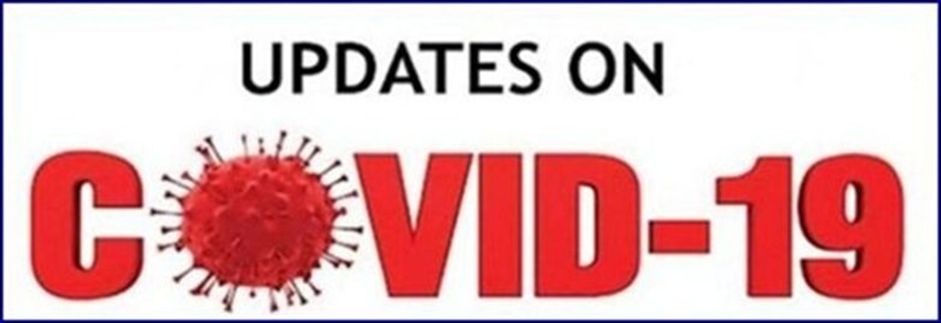
The new wave of infection with the coronavirus has started in Germany
The fourth wave of infection with the new coronavirus has begun in Germany, informs dpa, citing the latest report from the Robert Koch Institute (RKI), the national agency responsible for disease prevention and control. The proportion of positive samples in PCR testing increased from 4% to 6% within a week to mid-August,
The younger categories of the population have been particularly affected by COVID-19, according to the quoted source. “This now clearly shows the beginning of the fourth wave, which is getting stronger, especially from infections in the young adult population,” the report said. Since the beginning of July, there has been an increase in the incidence in Germany, especially for people aged 10 to 49, RKI says. In the summer of this year, the more contagious Delta variant dominates, representing 99% of cases. The incidence over the past seven days on Thursday was about 44 cases per 100,000 population, but with wide regional fluctuations. Overall, 63.7% of the population was vaccinated with one dose, while 58.2% was fully immunized. RKI’s weekly report comes out late. Most of the results of the latest analysis relate to data from the first week of August.
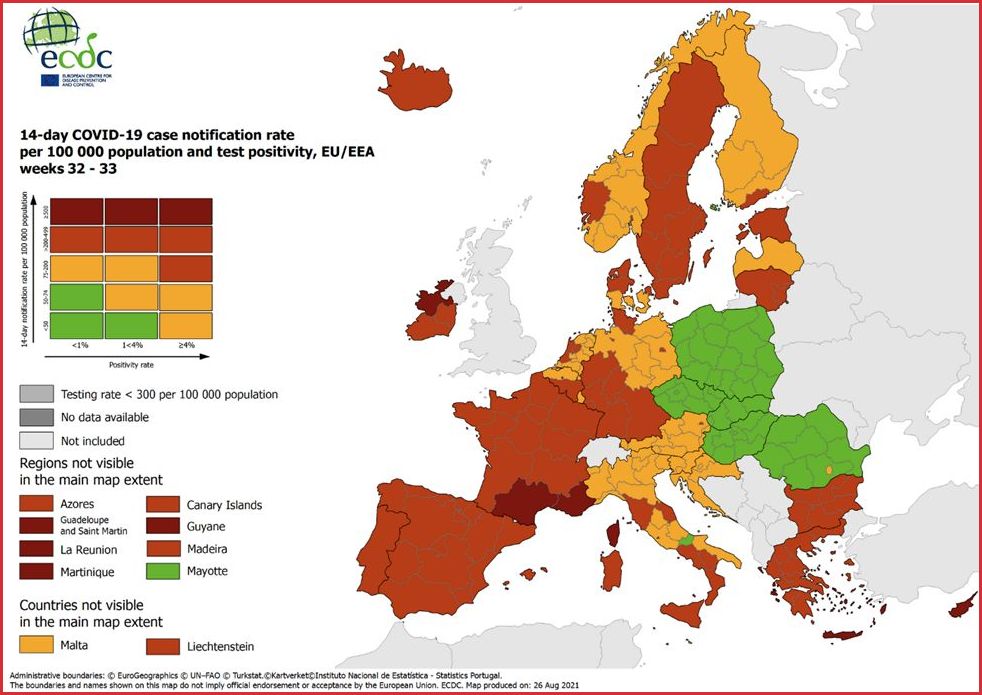
Below is the list of a number of EU countries with the highest vaccination coverage: Malta, Belgium, Spain and Portugal at the top. Romania and Bulgaria bottom of the ranking.
Malta ranks first with 88% of the population fully vaccinated against Covid on August 4 and 91% receiving at least one dose. It is followed by Belgium with a full immunization rate at 61% (70% partial), Spain at 60% (70%) and Portugal at 59% (70%), according to an analysis published by the Guardian based on data reported by governments and public health services and collected by Our World in Data. The ranking is followed by Denmark with a full immunization rate of 58% (73% at least one dose) and Ireland with 57.4% (68%).
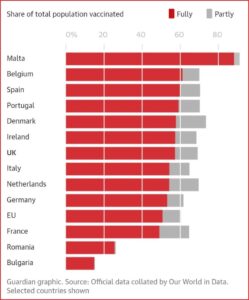 One explanation would be that the British have reached the stage where the vaccination campaign should convince skeptical or hesitant social groups. As a result, the daily vaccination rate in the UK is currently well below the EU average.
One explanation would be that the British have reached the stage where the vaccination campaign should convince skeptical or hesitant social groups. As a result, the daily vaccination rate in the UK is currently well below the EU average.
For example, on Wednesday, France administered 368,596 as the first dose and 261,695 as the second dose, while in the UK 33,304 were given as the first dose and 165,669 as the second dose.
Italy and Germany are also above the European average with 55% and 54% vaccinated.
According to data published by the Guardian, Romania ranks penultimate in the ranking, with less than 30%, followed by Bulgaria with the lowest percentage of vaccinated people in the EU (less than 20%).
According to authorities in Bucharest, by Friday, August 6, 29% of Romania’s eligible population had been fully vaccinated, well below the target initially set by the officials leading the campaign.
Romanian entrepreneurs launch vaccine promotion campaign
Romanian Business Leaders, the Romanian business community, recently launched the campaign “Let’s open Romania!”. awareness of the importance of vaccination to stop the spread of the Covid-19 virus.
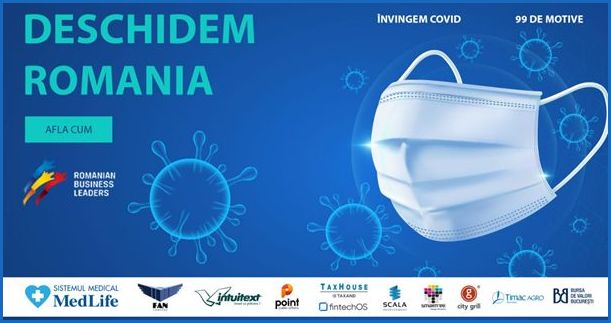 In the multitude of Romanian Business Leaders (RBL) projects, an ambitious new initiative is taking place, Open Romania!
In the multitude of Romanian Business Leaders (RBL) projects, an ambitious new initiative is taking place, Open Romania!
We open Romania! takes place in the digital environment, through two campaigns targeting the undecided categories: one targeting the risks of vaccination and one targeting the reasons for vaccination, both approached in a friendly manner.
The site www.DeschidemRomânia.ro collects in one place medical information understandable to everyone about the main barriers of Romanians when it comes to vaccination, information provided by prestigious experts.
This ties in with RBL’s main mission to build a Romania that future generations want to live in through engagement, information and education.
Currently in Romania it is vaccinated with both doses under 25% of the total population. According to the National Coordination Committee for Activities Vaccination Covid-19 (CNCAV), the vaccination rate is steadily decreasing.
According to a recent study by MedLife, the estimated vaccination coverage by the end of 2021 will be only 27-31% of the total population in Romania over the age of 16, or 5 million people.
The World Health Organization states that only with a vaccination rate of more than 60% with at least one dose, the infection rate, which indicates the number of people who can be infected with each new case, falls to 0.8%, in which case we can talk about eradicating the disease.
“Europe is already covered by the 4th wave of Covid, a wave that will also come to Romania. Summer should not only be an opportunity to relax restrictions, but also an opportunity to act to deal with problems that could arise in the fall. That is why, during this period, we appeal to our fellow citizens with the urge to get vaccinated, not to be wary now, when we have quite a few until we are victorious in the fight against this virus come out,” said Dragoș Petrescu, president of RBL.
Below you will find two graphs that show the current situation in Romania and where the figures speak for themselves.
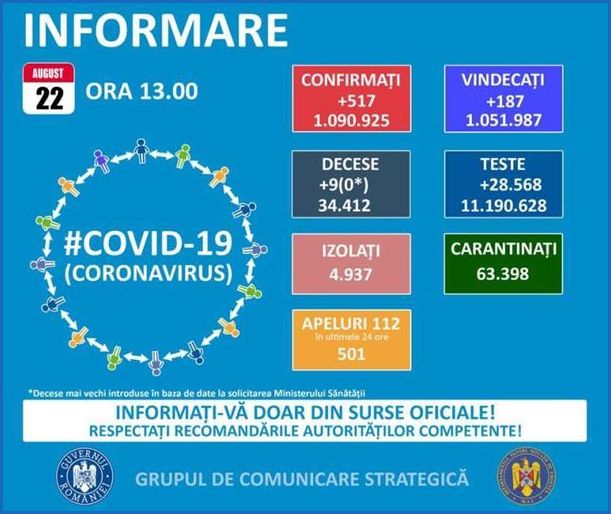
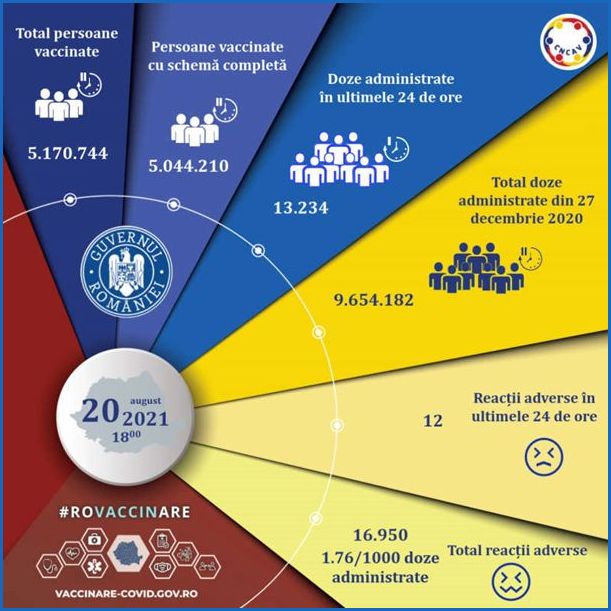
Interpol Warning: Organized Crime Networks Target Governments With Fake Covid Vaccine Offers
Organized crime groups are trying to defraud governments around the world with fake sales offers for Covid-19 vaccines, Interpol warns. The international police station, based in France, has issued a global warning after about 60 fraud attempts were identified in 40 countries, Bloomberg writes. The criminal groups target officials from ministries of health and hospitals and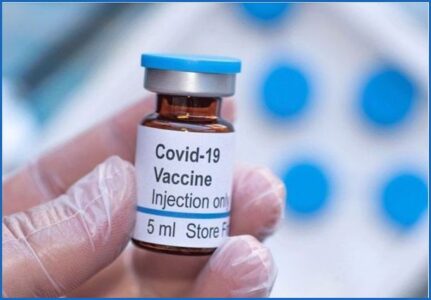 send them offers for nationally approved anti-Covid vaccines. “As a rule, claiming to be a vaccine manufacturer or a government agency that facilitates vaccine distribution targets both professional and personal email accounts of potential buyers,” Interpol said. The new warning follows a series of warnings from Interpol regarding crime threats in the context of the Covid-19 pandemic. “The criminals took advantage of every phase of the pandemic. From creating websites and accounts on social networks that claim to sell protective equipment and medical supplies, to manufacturing and distributing counterfeit vaccines, as well as ransomware attacks on critical infrastructure,” notes up the desk.
send them offers for nationally approved anti-Covid vaccines. “As a rule, claiming to be a vaccine manufacturer or a government agency that facilitates vaccine distribution targets both professional and personal email accounts of potential buyers,” Interpol said. The new warning follows a series of warnings from Interpol regarding crime threats in the context of the Covid-19 pandemic. “The criminals took advantage of every phase of the pandemic. From creating websites and accounts on social networks that claim to sell protective equipment and medical supplies, to manufacturing and distributing counterfeit vaccines, as well as ransomware attacks on critical infrastructure,” notes up the desk.
US: Efficacy of Pfizer and Moderna vaccines reduced to 66% for Delta (study)
The effectiveness of Pfizer and Moderna vaccines against COVID-19 infection has fallen from 91% to 66% since the Delta variant became dominant in the United States, according to data released Tuesday by US health authorities, AFP reports.
 This data comes from a survey of thousands of workers in health care facilities and hospitals in six states, which examined the performance of vaccines in real-world conditions. Participants are tested weekly for both symptomatic and asymptomatic infections. Nearly all vaccinated health professionals were injected with serums from Pfizer or Moderna.
This data comes from a survey of thousands of workers in health care facilities and hospitals in six states, which examined the performance of vaccines in real-world conditions. Participants are tested weekly for both symptomatic and asymptomatic infections. Nearly all vaccinated health professionals were injected with serums from Pfizer or Moderna.
Between December 2020 and April 2021, the effectiveness of vaccines in preventing infection was 91%, according to data released by the Centers for Disease Control and Prevention (CDC), the leading federal public health agency in the United States.
But after the Delta variant became dominant, ie when it was identified in more than 50% of the cases, the efficiency dropped to 66%.
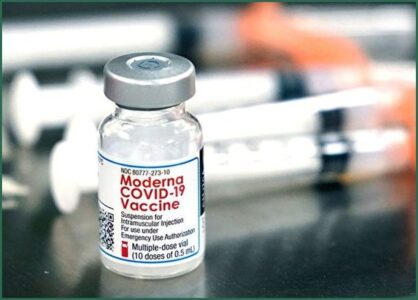 However, the study authors caution that this decline could be caused not only by the Delta variant, but also by a time erosion of vaccine efficacy.
However, the study authors caution that this decline could be caused not only by the Delta variant, but also by a time erosion of vaccine efficacy.
“While these interim data indicate a moderate reduction in the effectiveness of COVID-19 vaccines in preventing infection, the fact that the reduction in infections remains at two-thirds underscores the importance and continued benefits of vaccination,” the authors said. the research. This decrease in efficacy in the Delta variant has been demonstrated by multiple studies, even though the exact figure differs per study.
This is one reason health authorities gave last week for announcing a recall in mid-September for all U.S. adults who received the second dose eight months ago. However, vaccine protection against severe cases, hospitalizations and deaths remains high. 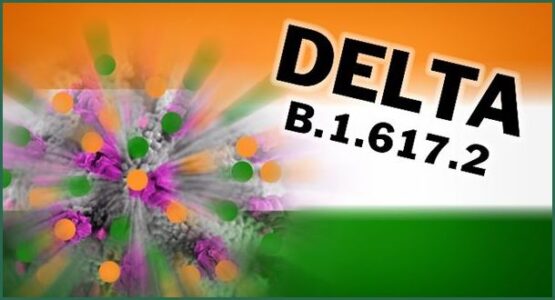
Another study released Tuesday by the CDC, conducted on patients in Los Angeles between early May and late July, shows that unvaccinated people are 29 times more likely to be hospitalized than vaccinated people.
The Delta variant became dominant in the US in early July and is currently responsible for more than 98% of infections.
Romania, one of the lowest vaccination rates in Europe / What restrictions or incentives do other countries offer and what is the Romanian situation?
Romania is in the top 5 European countries with the lowest percentage of vaccinated populations (both the first and second dose), according to data published by the platform Our World in Data. We have about 27% of the vaccinated population, equivalent to Albania, but more than 10 percentage points away from Bulgaria and the Republic of Moldova.
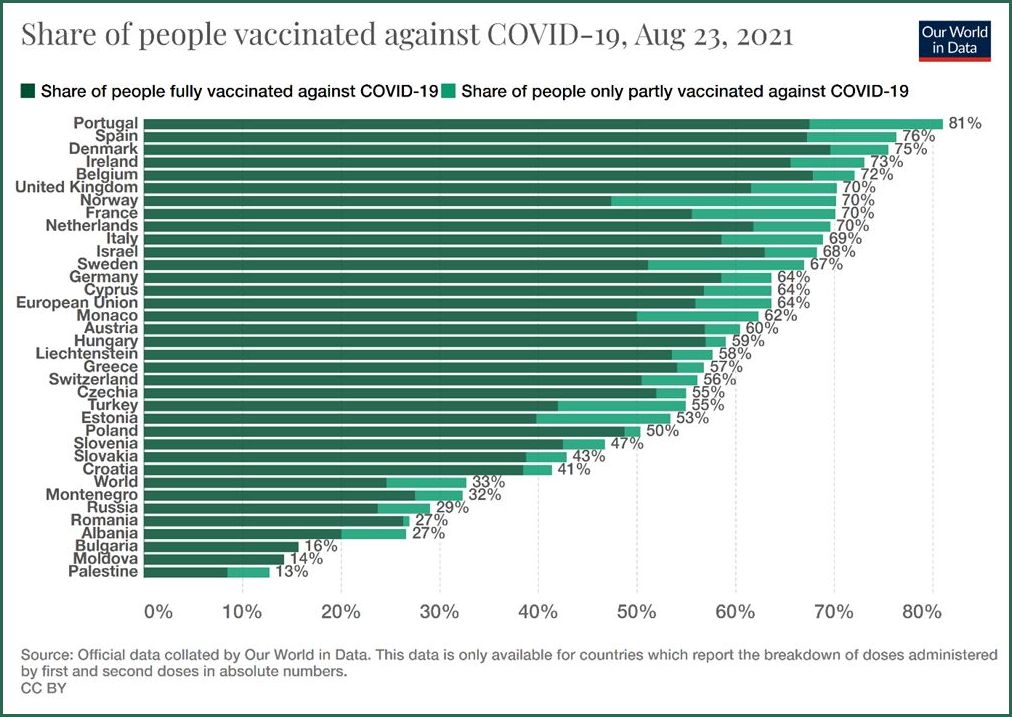
The best placed state in the ranking is the Portuguese state, where more than 80% of the population has been vaccinated. In the group of states with a vaccination coverage of more than 70%, we also find Spain, Denmark, Ireland, Belgium, UK, Norway, France and the Netherlands. To increase vaccination coverage, several states have turned to threats or rewards.
In Athens a Covid-19 vaccine will cost you 150 euros. From mid-July, all vaccinators under the age of 26 will receive a bonus of 150 euros. The prize is paid after the first vaccine in the form of a digital voucher, which can be used to pay for travel tickets by train, boat or plane, for accommodation in holiday resorts or tickets to a concert or museum. But if you don’t get vaccinated, something else will be prepared for you!
In Prague you might win an iPhone. In other countries, you risk losing your job if you don’t get vaccinated, Bloomberg writes.
In France President Emmanuel Macron promised a “summer of mobilization” for vaccination, with the obligation to vaccinate health workers.
Reintroducing restrictions for unvaccinated people?
As the Delta variant spreads rapidly, some leaders believe stronger steps are needed to overcome a pandemic that has killed more than four million people worldwide and devastated many more financially and psychologically.
“We do not intend to follow the path that France has proposed,” German Chancellor Angela Merkel said recently. “I don’t think we can gain anyone’s trust by changing our previous promise: no mandatory vaccinations.”
Across the EU, approximately 64% of the population is vaccinated.
In Germany, the public health institute RKI estimated that 85% of people between the ages of 12 and 59 should be vaccinated to obtain so-called herd immunity, which is also achieved with 90% vaccination. .
In France, health permits proving testing or immunization will also be required for theatres, cinemas, sports venues or festivals with audiences of more than 50 people. The law was also extended in August to allow access to restaurants.
In Italy, Covid vaccines will be mandatory for health workers in May. About 68% of Italians support the idea that only fully vaccinated people have access to restaurants, hotels, cinemas, trains and planes, according to a Euromedia Research survey published in La Stampa. The same percentage of Italians would support the suspension from the system of medical personnel not fully vaccinated by mid-September.
Other countries, including Ireland, also link access to the vaccination restaurant. Deputy Prime Minister Leo Varadkar acknowledged that the plan is “imperfect” but is the best option available.
In Romania the incentives could consist of 100 lei meal vouchers for each person vaccinated against COVID-19 with the full schedule – two doses of Pfizer, Moderna or AstraZeneca vaccine or a dose of Johnson & Johnson vaccine – as well as cash prizes for people who, after being vaccinated with the full schedule, register for the Vaccination Lottery. The value of these awards has not yet been established. The draft emergency ordinance initiated by the Ministry of Health that determines how Romanians who are vaccinated will be rewarded.
How to add a European Covid digital certificate to Apple Wallet
Digital vaccination certificates have also been launched in Romania and those vaccinated in the country can already download the certificate. A site created by a German IT specialist can help you, if you have an iPhone, to store the certificate in the Apple Wallet, where you have cards or boarding passes, so that it is easier to access.
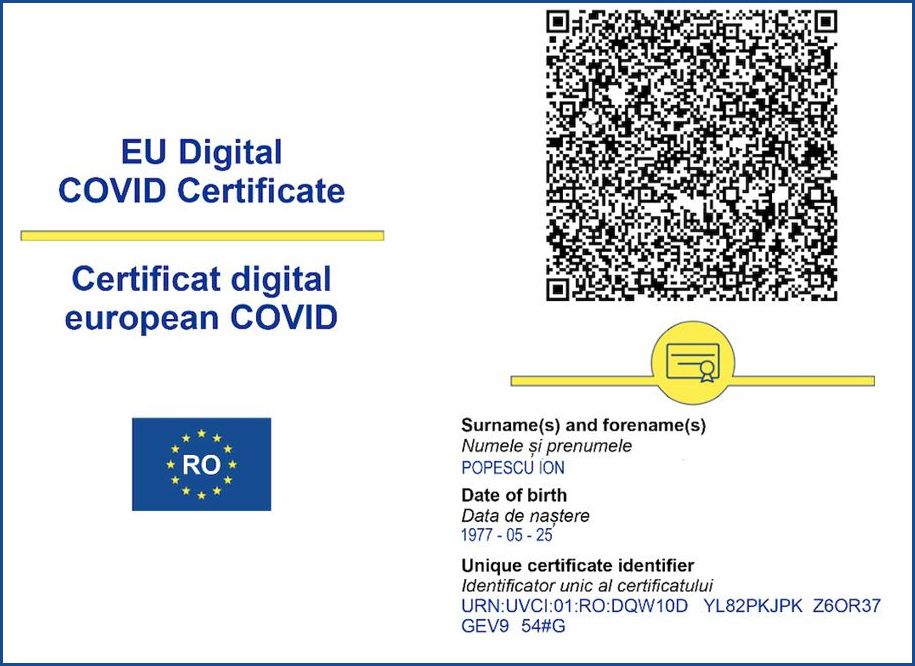
The Covid Pass website was developed by Marvin Sextro, a German IT specialist, and makes uploading the Covid certificate in the apple Wallet possible, if not already allowed by the issuing country. In Romania, digital certificates can currently be stored in PDF format or can be accessed online through the website launched by STS. On the Covid Pass platform, you can open the camera and scan or upload the QR code on the digital certificate if you in pdf format. Later you can choose a color for the digital certificate, accept the privacy policy and the certificate will be added where you have a boarding pass or debit card.
CNSU has updated the list of states based on epidemiological risk
The National Emergency Situations Committee (CNSU) has updated the list of countries and territories based on the incidence of COVID-19 cases. The list will go into effect on August 29 at 12:00 AM.
Immediately were placed in the red zone :
Switzerland, North Macedonia, Azerbaijan, Liechtenstein, Guam, Bahamas, Maldives, Anquilla and Saint Kitts and Nevis.
Bulgaria, Serbia, Albania, Armenia, Slovenia, Belarus, Japan, Palestine, Philippines, Mauritius, East Timor, Burnei Darussalam, Guyana and Bermuda are due to the increase in incidence ended up in the yellow zone . Also in the yellow zone were placed, but due to the decrease in incidence and exit from the red zone, the states: Iraq and Afghanistan.
From the yellow zone are the countries:
the United Arab Emirates, Kuwait and the British Virgin Islands due to the decrease in incidence entered the green zone.
Red zone – where the cumulative incidence of new cases in the last 14 days per 1,000 inhabitants is greater than or equal to 3 per 1,000 inhabitants.
People who come out of the red list must be quarantined for 14 days. People who demonstrate that they have been vaccinated against COVID-19 with a full vaccination schedule older than ten days will be excluded. Also, children under the age of 6 are automatically exempted from quarantine, and children between the ages of 6 and 16 are exempt if they present a test with a negative result performed no later than 72 hours before entering the country. For people who have been quarantined for 14 days, they have the option of having a PCR test on the eighth day, and if it is negative, they can leave the quarantine on the tenth day.
The states and territories in the red zone are: French Polynesia 47.3, Georgia 16.8, Aruba 14.3, Dominica 13.2, Botswana 12, Kosovo 11.2, Seychelles 11.2, Cuba 11.2, Sint Maarten 11, 0, Israel 10.4, Montenegro 10.0, Isle of Man 9.2, Malaysia 9.0, Eswatini 8.1, Saint Lucia 7.6, Fiji 7.3, Cyprus 6.0, United Kingdom ** 5 , 9, United States 5.9, US Virgin Islands 5.8, Iran 5.7, Kazakhstan 5.6, North Macedonia 5.4, Curacao 5.3, Mongolia 5.1, Ireland 5.0, Costa Rica 4.9, Gibraltar 4.7, France 4.7, Guam 4.5, Jersey 4.4, Puerto Rico 4.2, Thailand 4.2, Greece 4.2, Monaco 3.9, Libya 3.9, Turkey 3.9, Azerbaijan 3.9, Saint Kitts and Nevis 3.9, Bahamas 3.8, Switzerland 3, 7, Spain 3.5, Iceland 3.5, Anguilla 3.5, Liechtenstein 3, 3, Portugal 3.2, Morocco 3.1, Maldives 3.0, South Africa ** 2.7, Brazil ** 1 .9, Nepal ** 1.0 and India ** 0.3 .
(**Due to the detection in humans of higher transmission variants of the SARS-CoV-2 virus.)
Yellow zone – where the cumulative incidence of new cases in the last 14 days per 1,000 inhabitants is between 1.5 and 3 per 1,000 inhabitants. People coming from the yellow zone will not be quarantined if they have been vaccinated or have a PCR test, no older than 72 hours.
The states and territories in the yellow zone are: Estonia 2.9, Sri Lanka 2.8, Iraq 2.8, Lithuania 2.8, Guatemala 2.7, Guernsey 2.7, Suriname 2.6, Jamaica 2.6, Mauritius 2.5, Brunei Darussalam 2.5, Serbia 2.4, Panama 2.4, Argentina 2.3, Tunisia 2.3, Denmark 2.3, Belgium 2.3 , Turks and Caicos Islands 2.3, Lebanon 2 , 2, Greenland 2.2, Honduras 2.1, Russian Federation 2.1, Belize 2.1, Trinidad and Tobago 2.0, Mexico 2.0, East Timor 2.0, San Marino 1.9, Bulgaria 1.9, Albania 1.9, Netherlands 1.9 , Japan 1.9, Armenia 1.9, Malta 1.8, Finland 1.8, Bonaire, St. Eustatius and Saba 1.8, Slovenia 1.8, Guyana 1.7, Palestine 1.7, Belarus 1.7, Bermuda 1.7, Andorra 1.7 and Philippines 1.6.
The rest of the countries and territories are in the green zone. Travelers coming from the green zone no longer need to show documents. They will not be quarantined and will no longer be required to provide proof of testing or vaccination against COVID-19.
Special message
First eID cards will be issued in Romania in September
The first electronic identity cards issued in Romania will be delivered to their holders in September, Interior Minister Lucian Bode said on Monday, August 23. According to the minister, between August 2, when the pilot project in Cluj-Napoca started, and registered 100 applications for the issuance of eID cards on 18 August. Such a request is resolved in about 15 minutes. In Cluj-Napoca, the pilot project for the issuance of eID cards started on 2 August. The authorities expect to issue about 5,000 eID cards this year.
The Interior Ministry previously explained that from August 2 Romania was obliged to issue eID cards, in accordance with European Parliament and European Council regulations on the security of identity cards and residence documents of EU citizens. The new identity cards should replace the current ones by August 2031.
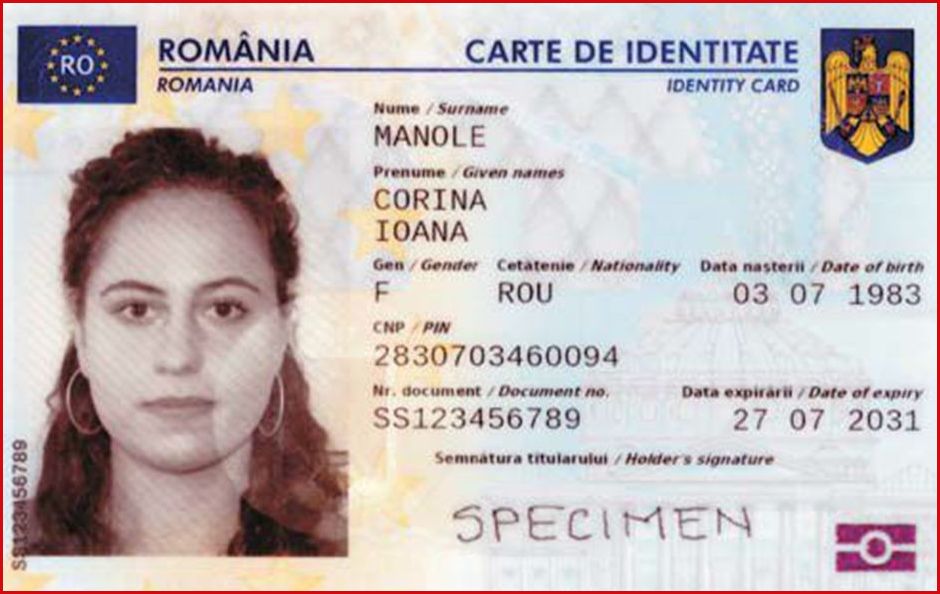
The chip-based eID card is the size of a bank card and contains security features intended to provide the holder with additional protection and prevent situations of identity theft. It will give holders access to national and European services and “provide the necessary technical support for using the electronic signature, which will help reduce bureaucracy in the relationship between citizens and public authorities,” MAI said. It contains the functionalities of the health card and facilitates access to e-government services, explains Interior Minister Lucian Bode.
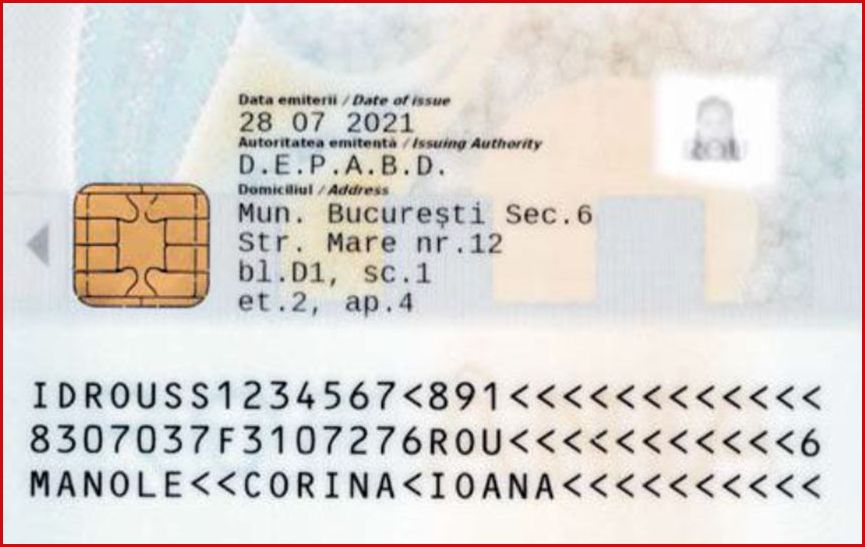
Children can get the new electronic identity card, regardless of their age. Current ID cards are issued to children when they turn 14. The cost of issuing the new card is EUR 14 (RON 70). It takes a minimum of ten days to produce the card, with the transport period added because they are produced in Bucharest, explains Bode. The pilot project has two phases. “We are talking about two phases. In the first phase, which we estimate will last five or six months, the first electronic identity card will be issued and eID cards will be introduced gradually for persons between 14 and 18 years and children up to 14 years. In this phase, we will test how the electronic identity card is used and how the infrastructure meets the technical requirements,” said Bode. .In the second phase, the authorities will increase the capacity to issue eID cards to evaluate production needs “to know how much we need to expand production to have everything ready when we start issuing the eID cards on national level. There are currently 200,000 chips available to implement both phases,” said the minister.
Disclaimer

The newsletter of the Dutch Romanian Network is compiled with great care. The Dutch Romanian Network cannot accept any liability for a possible inaccuracy and/or incompleteness of the information provided herein, nor can any rights be derived from the content of the newsletter. The articles do not necessarily reflect the opinion of the board.
